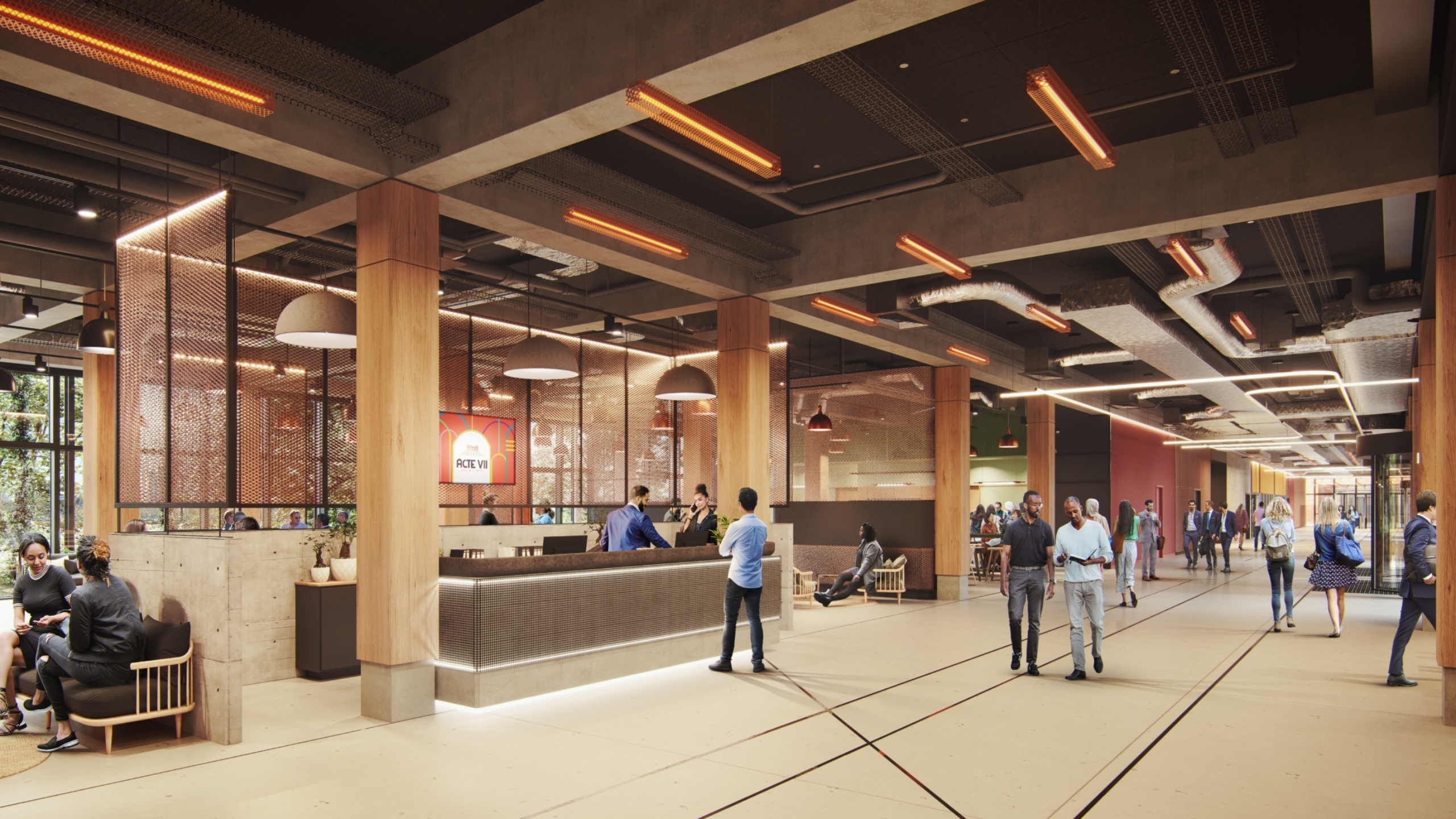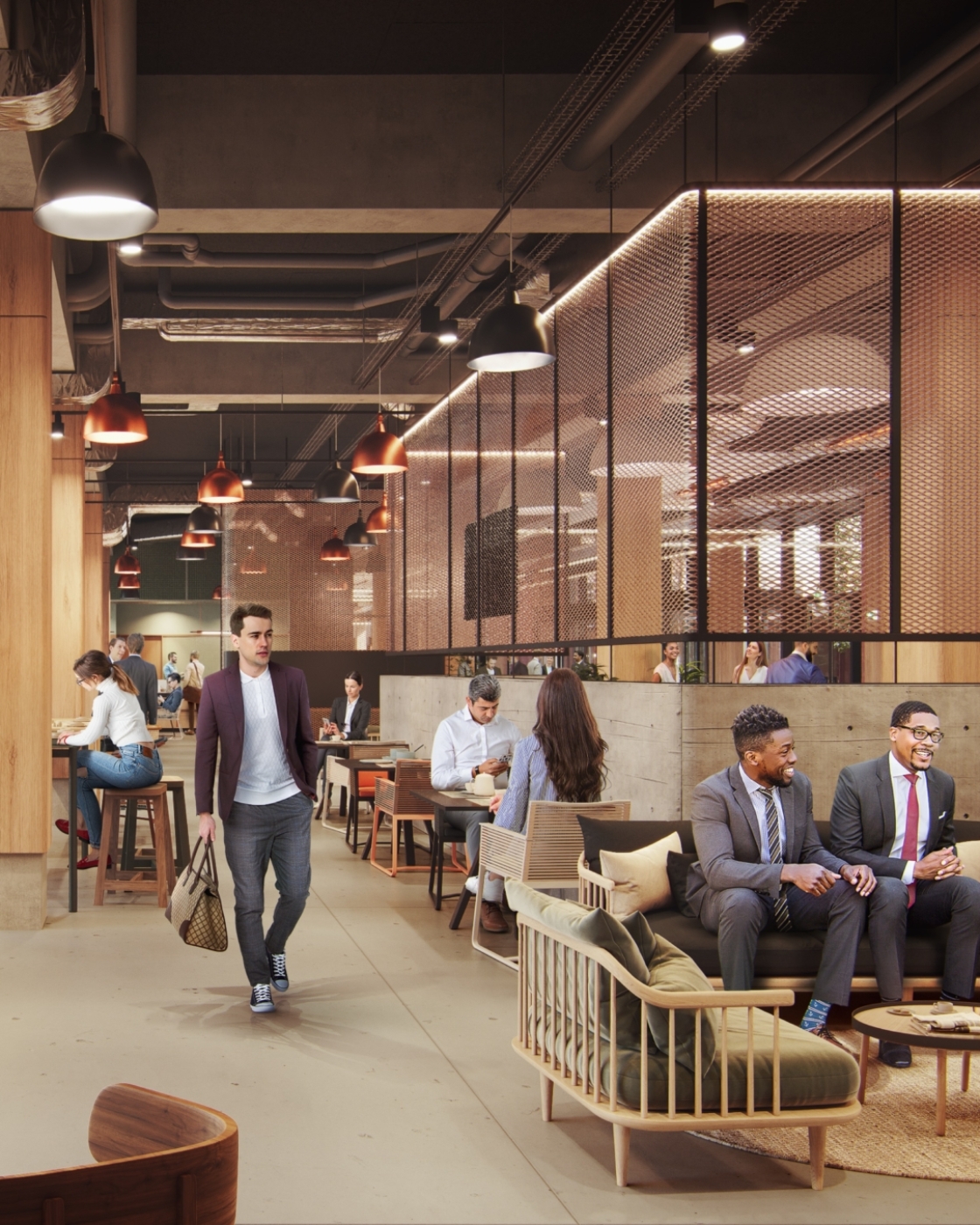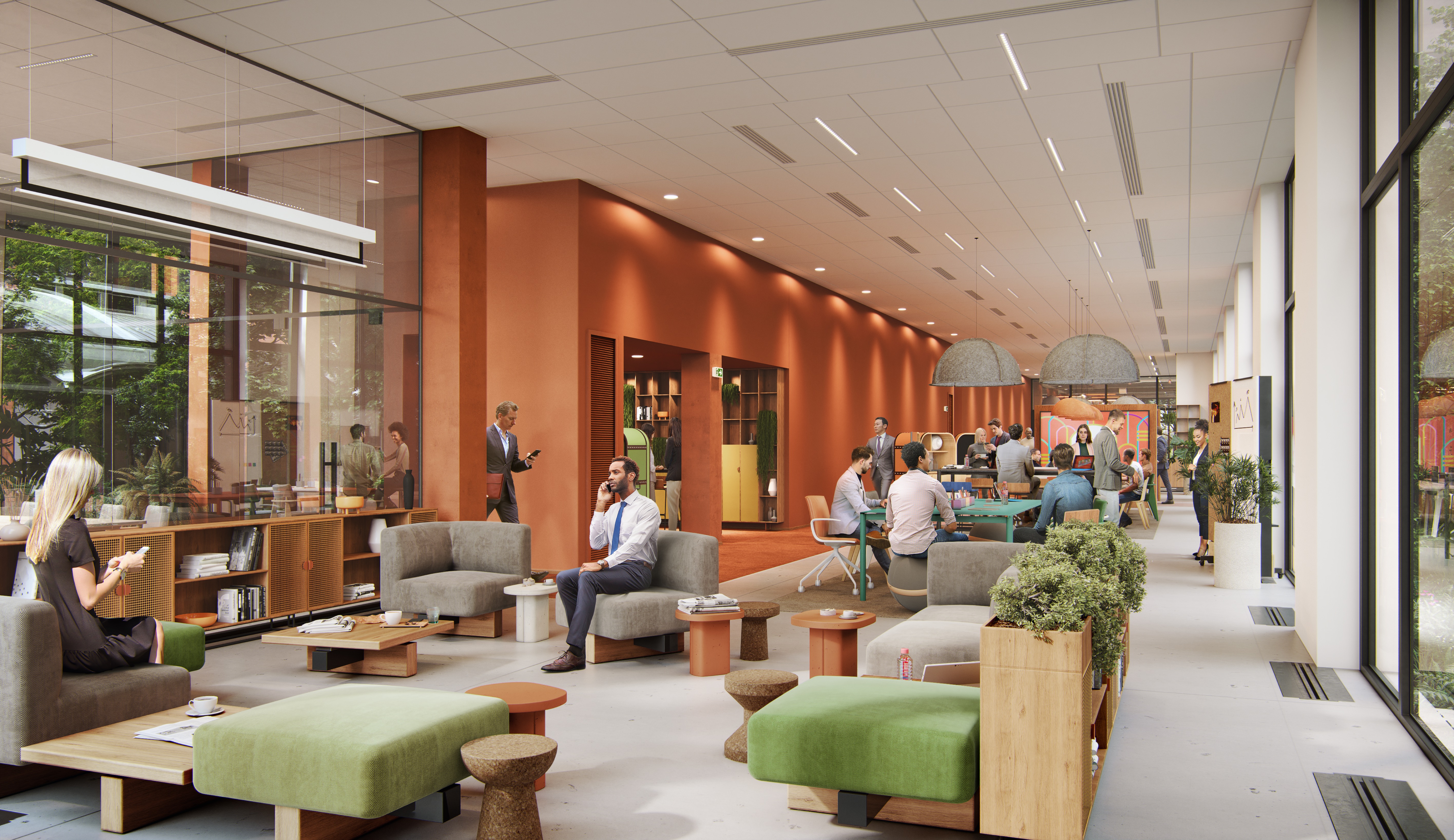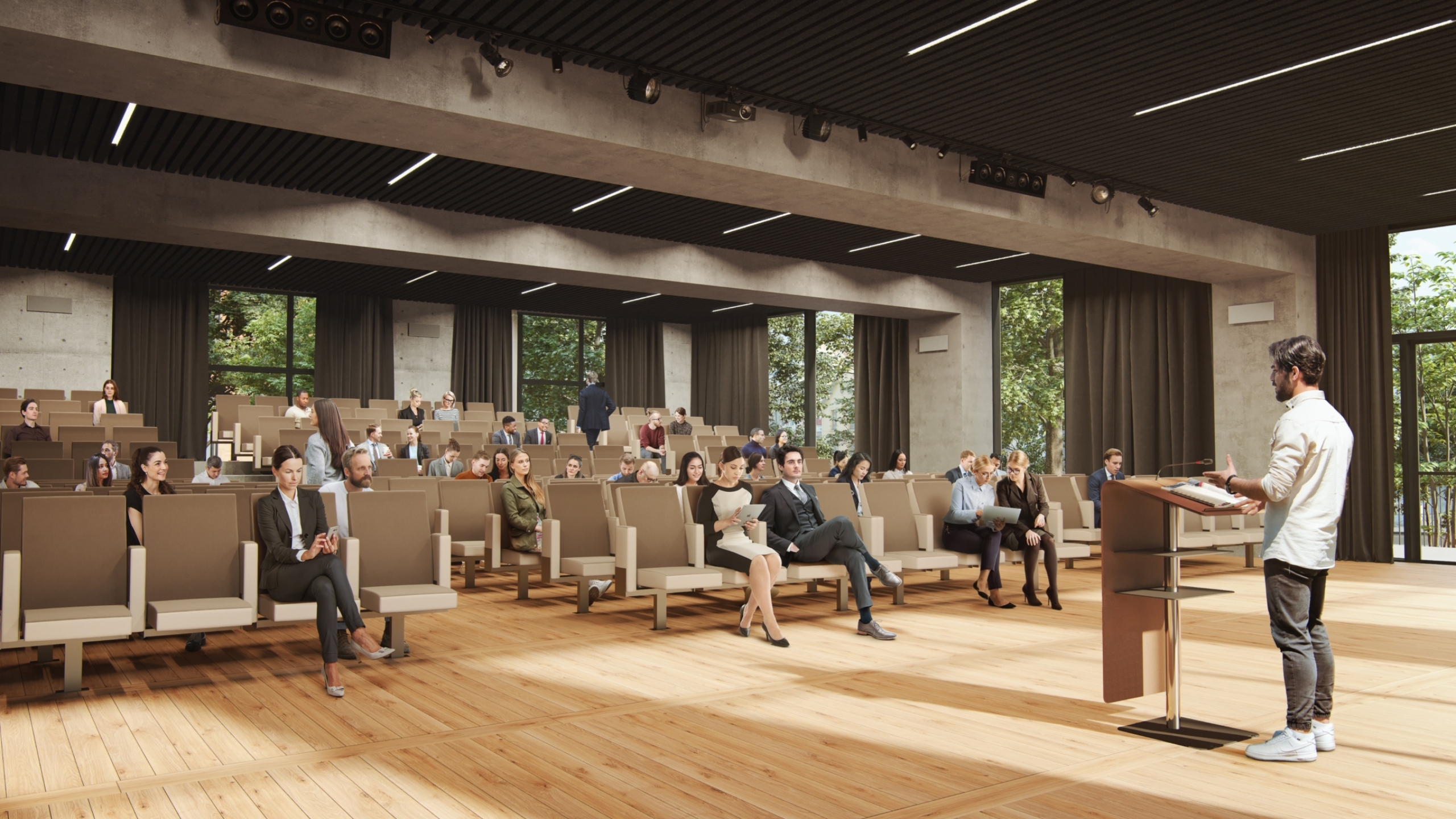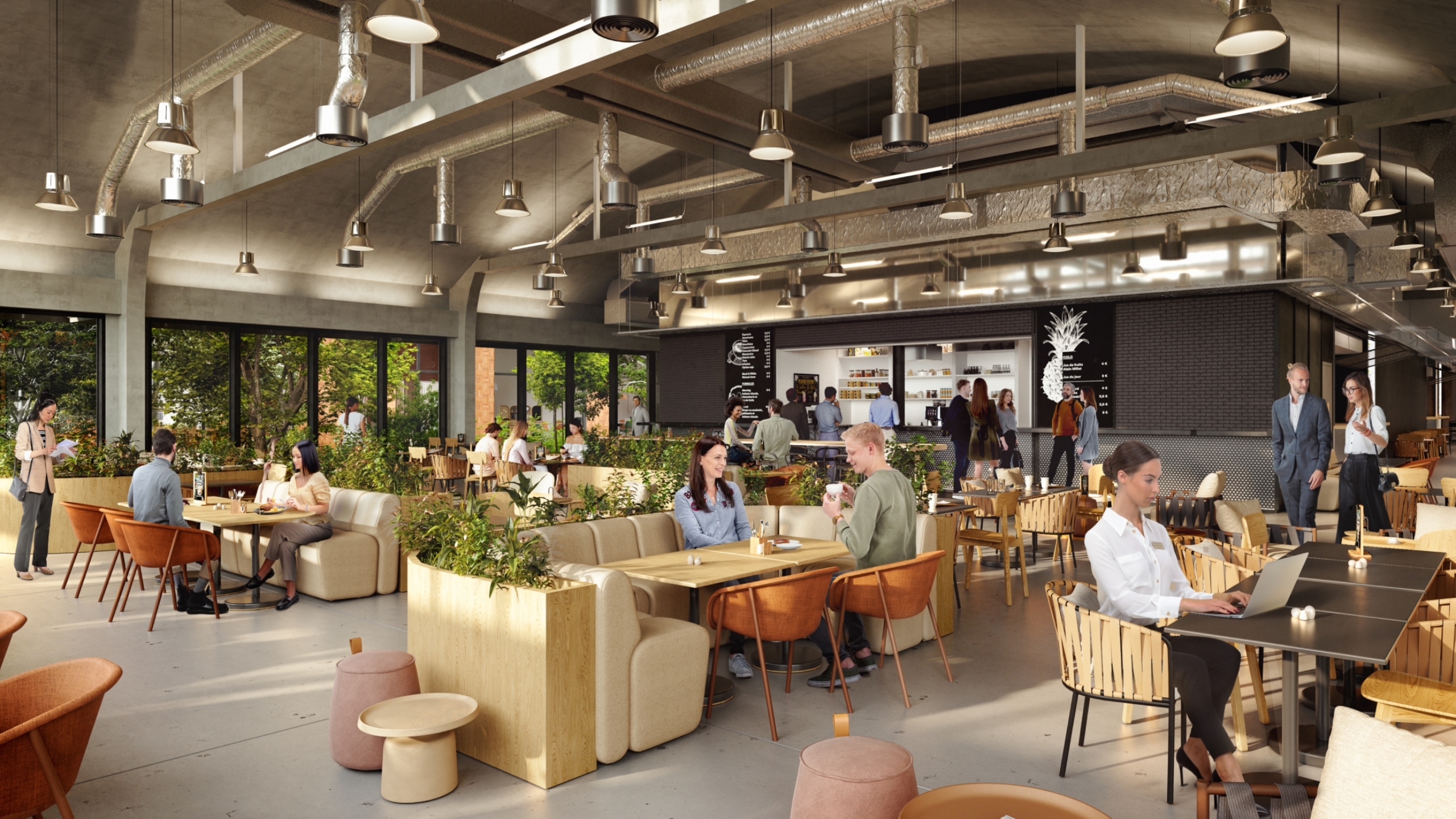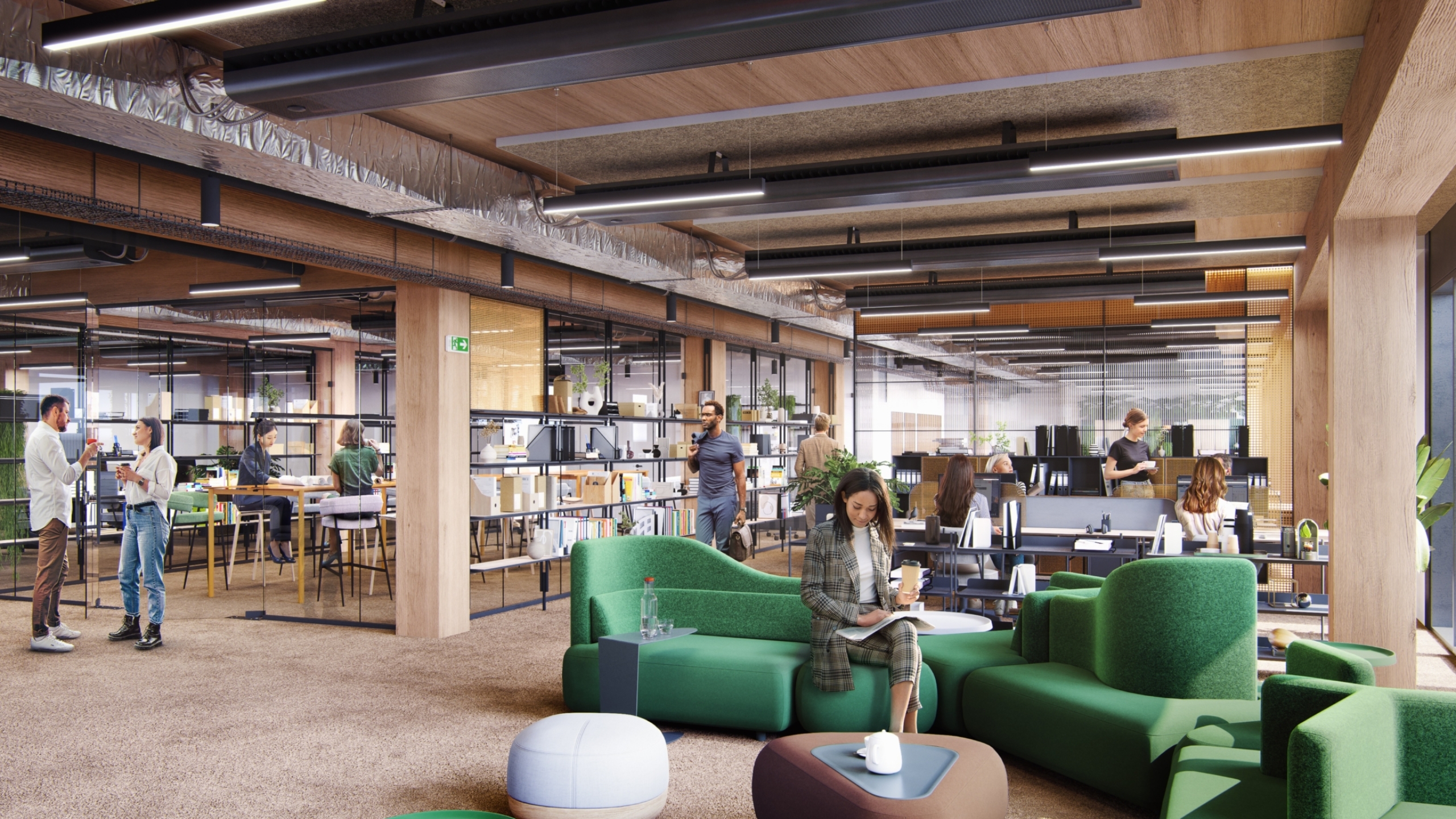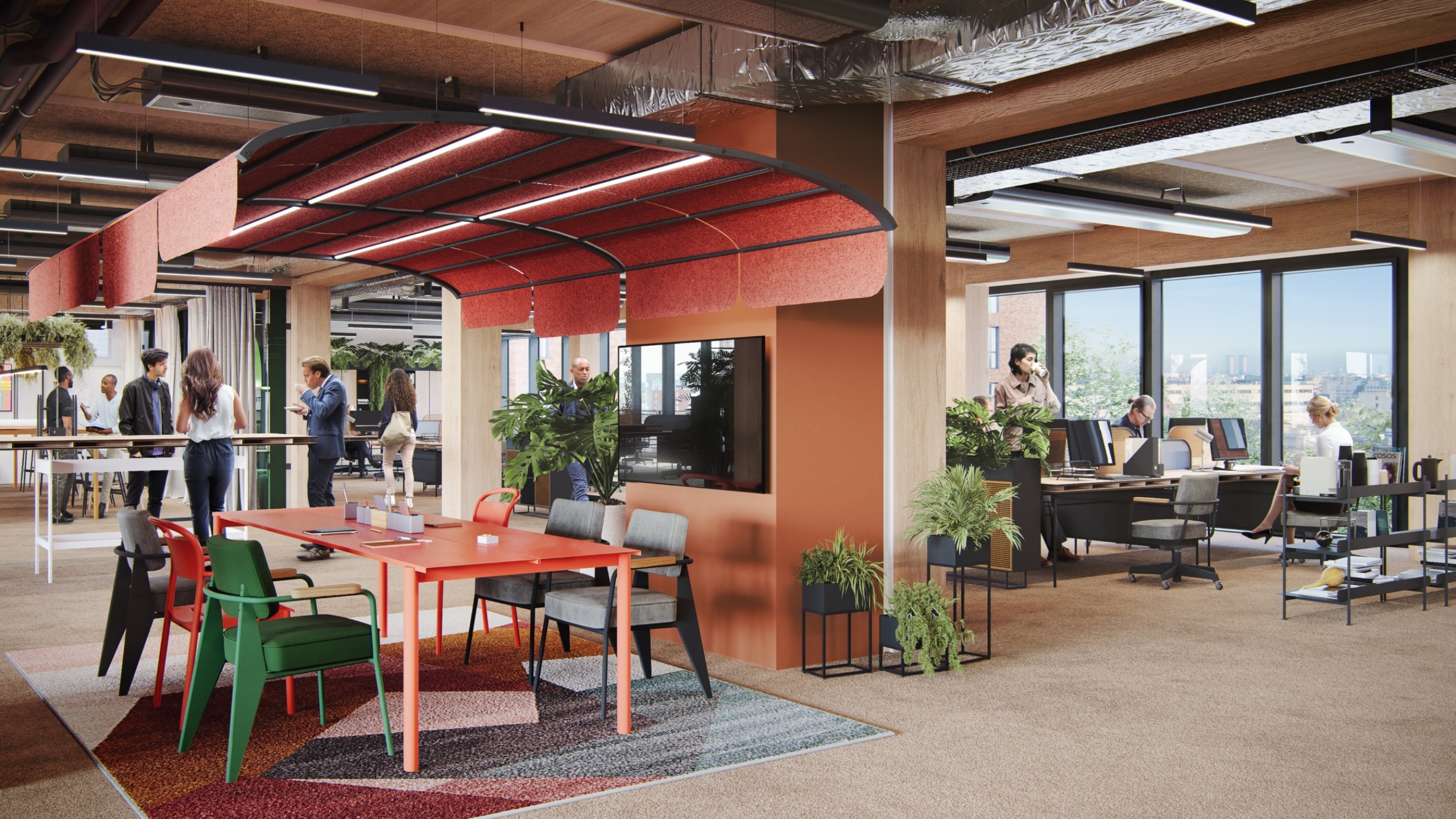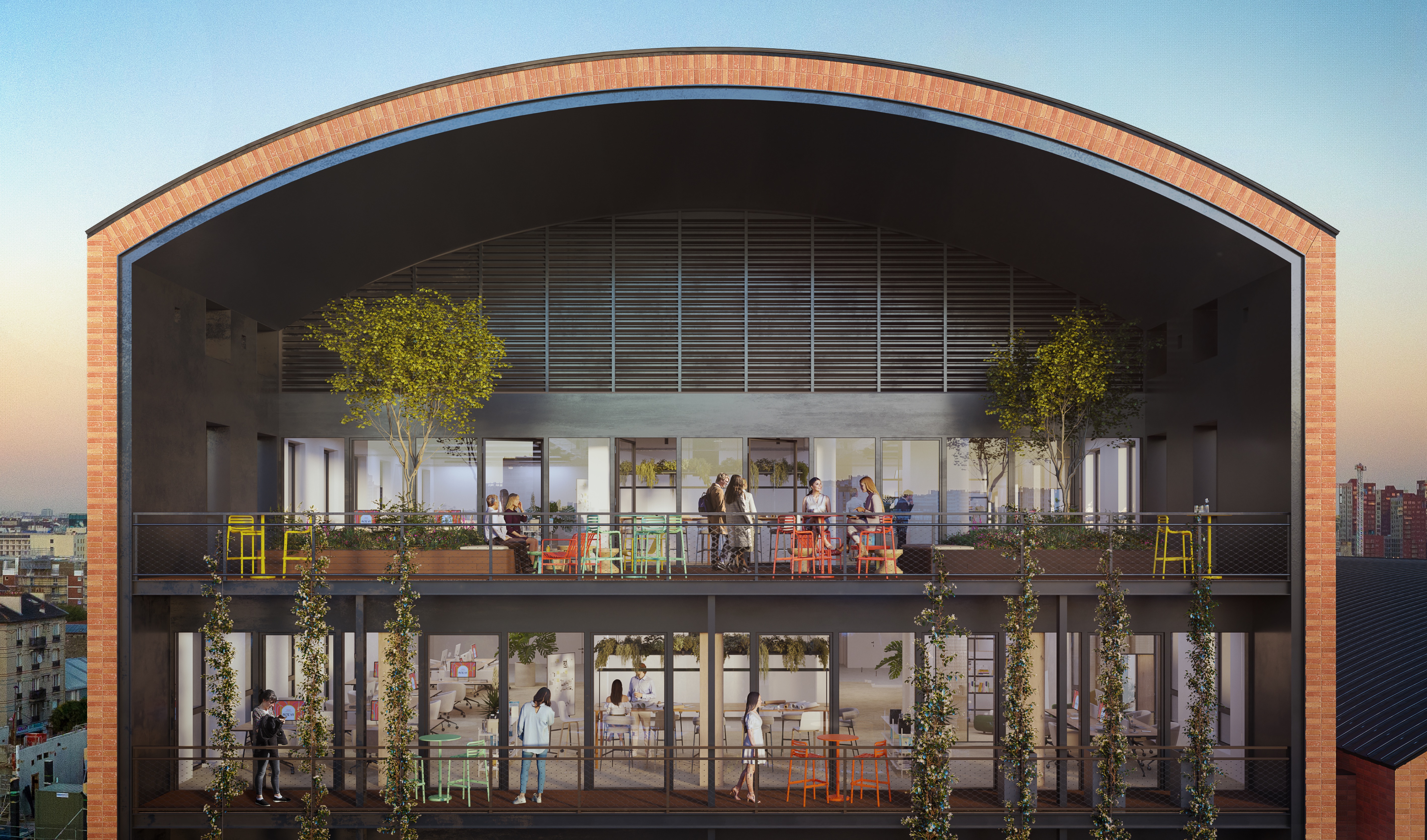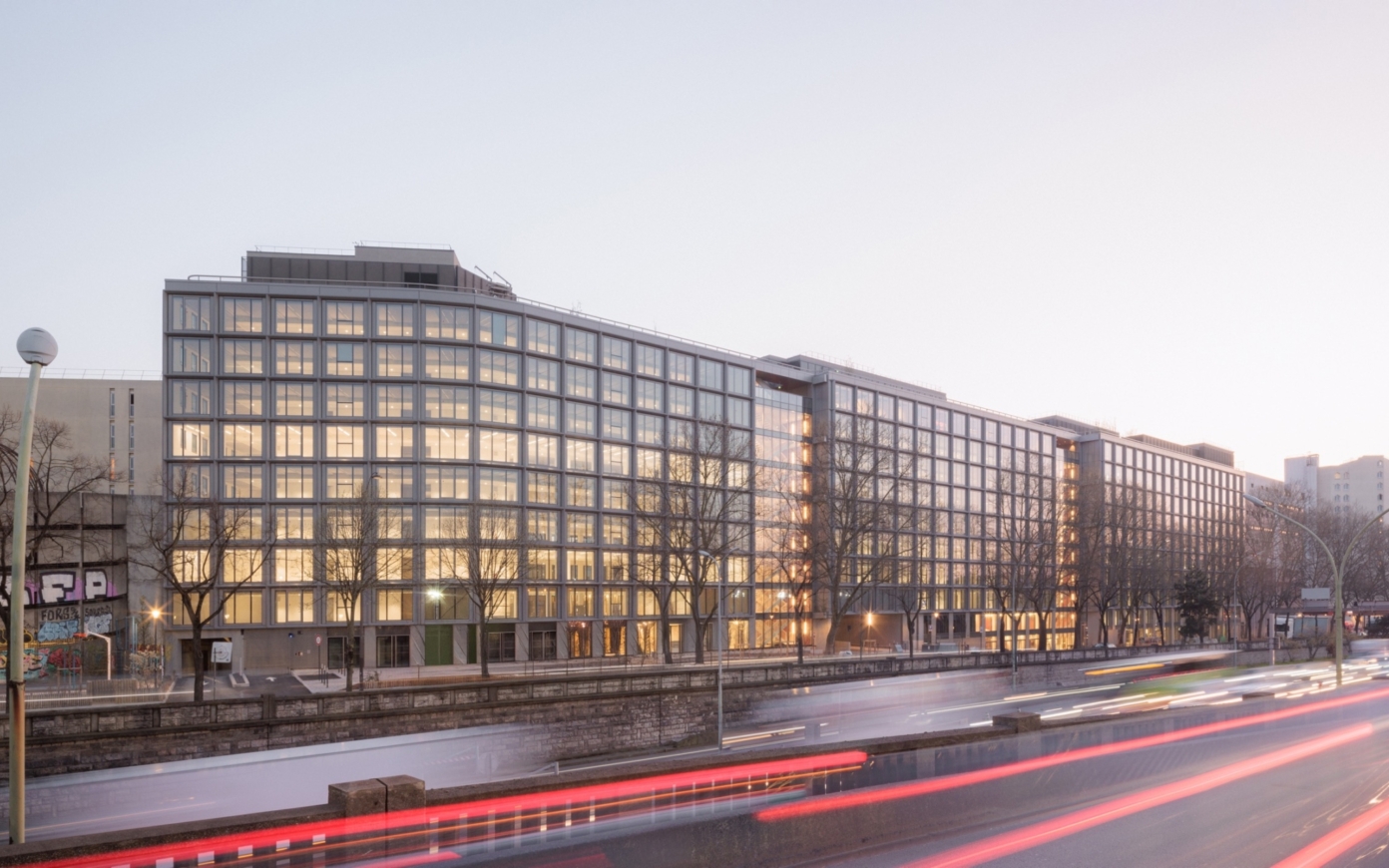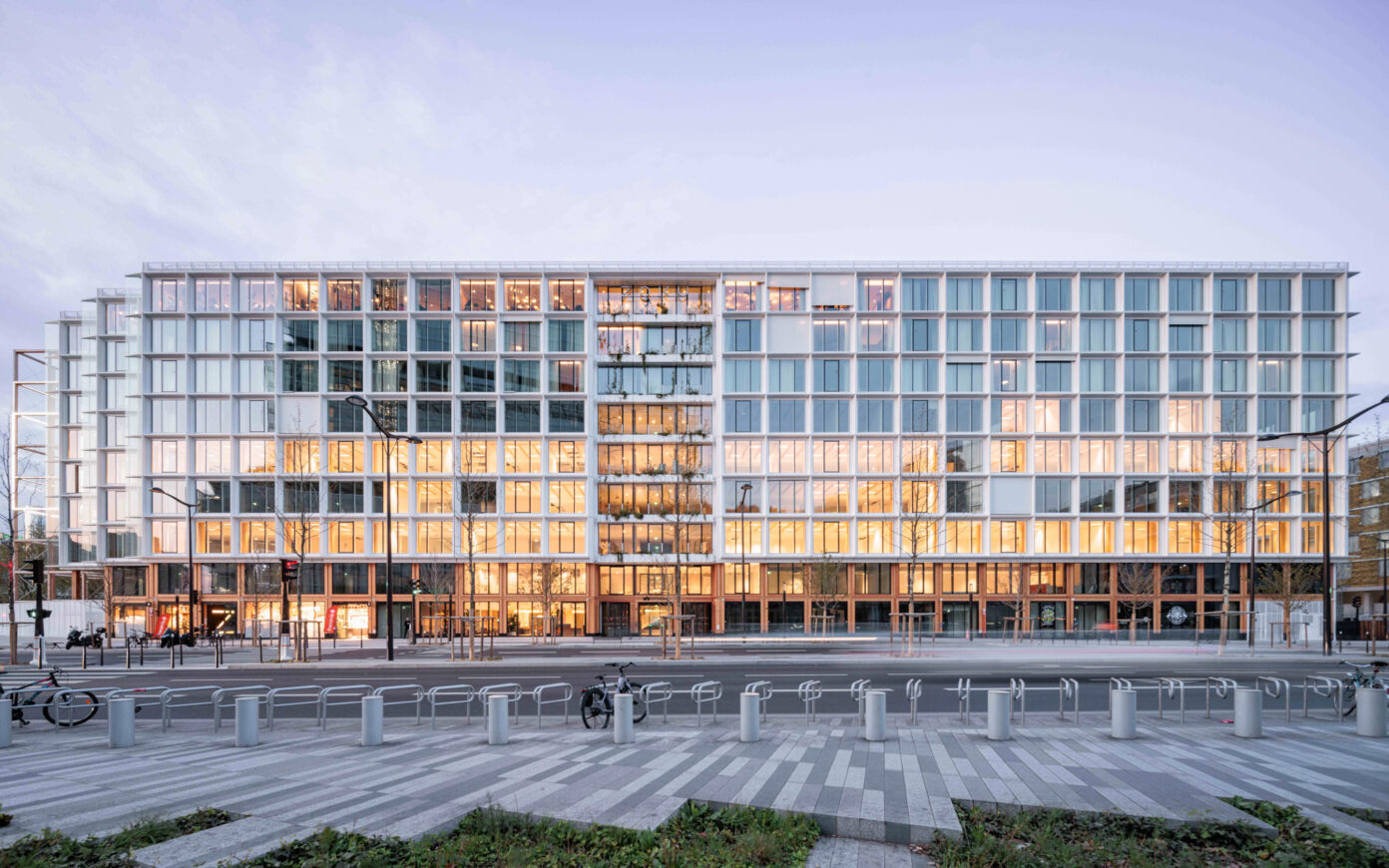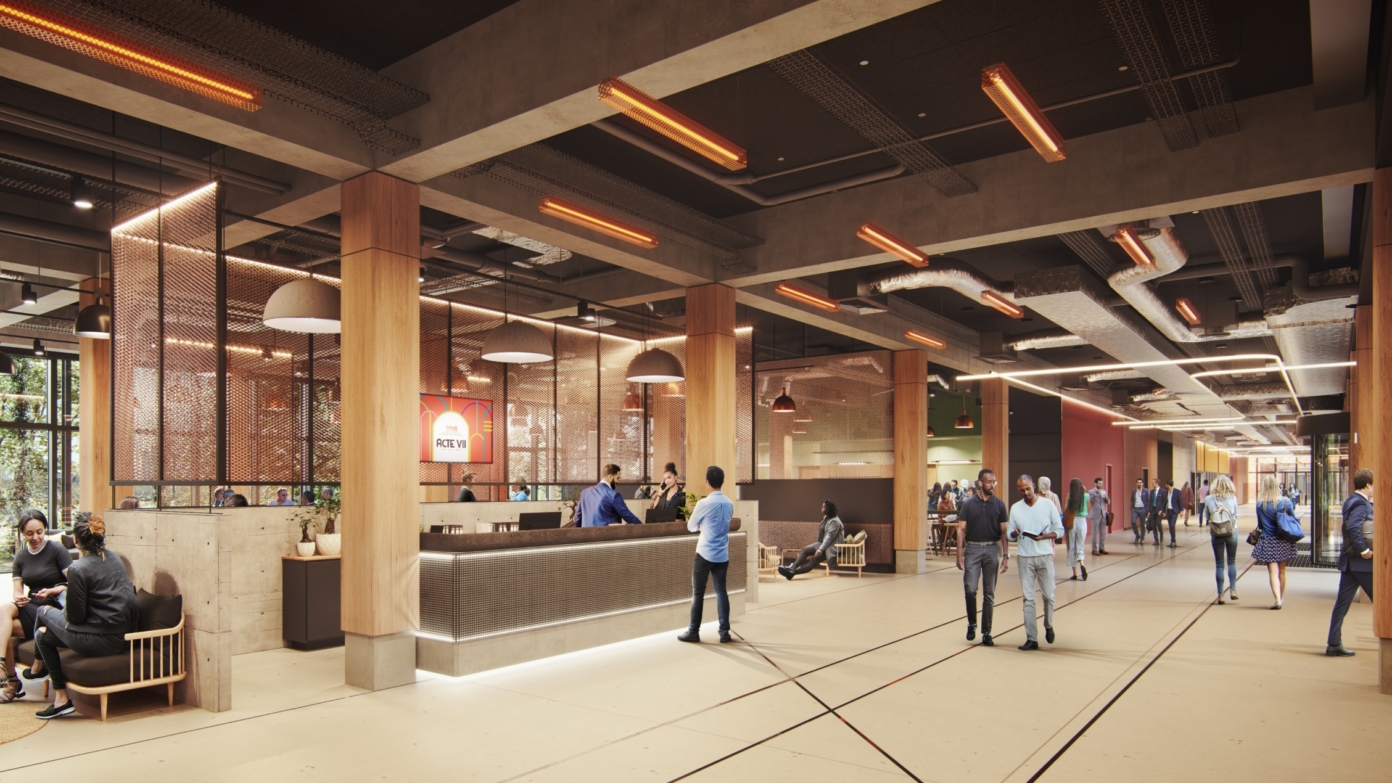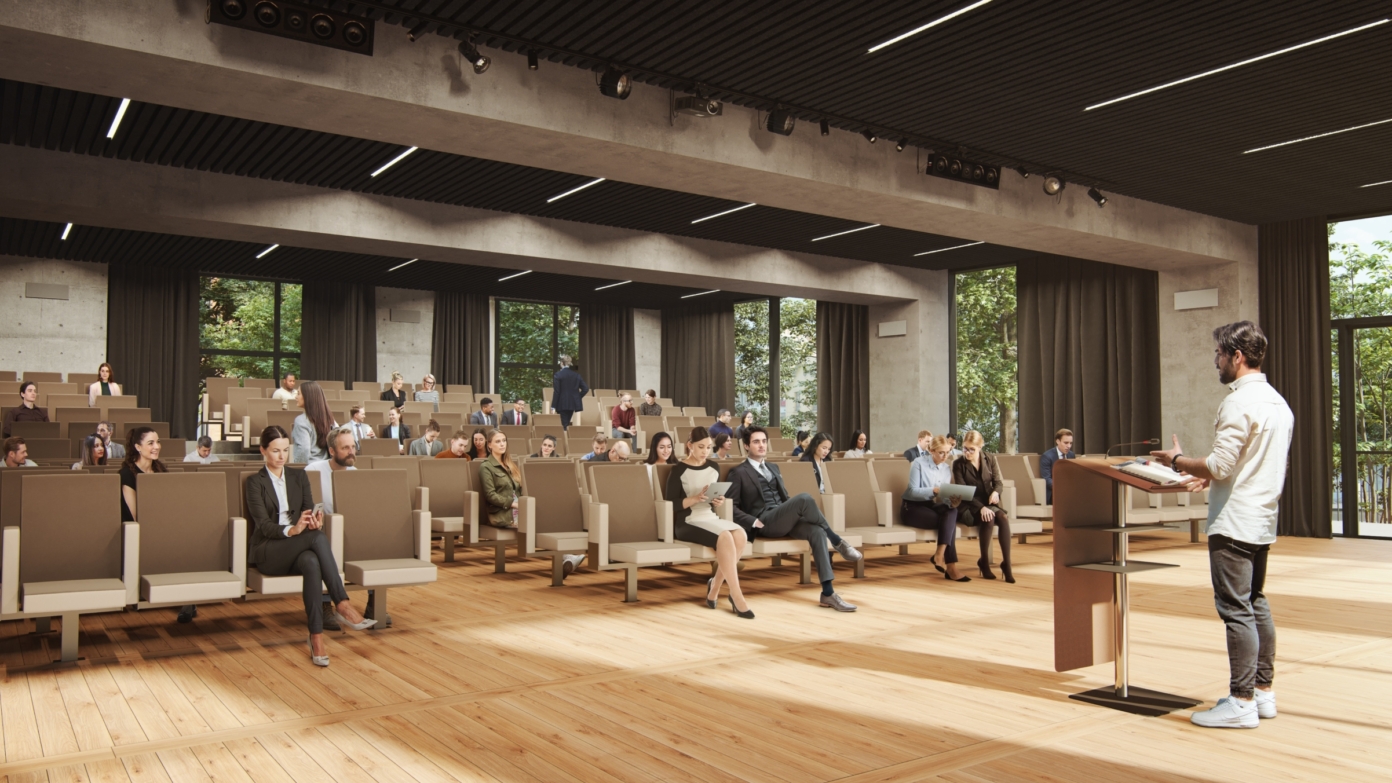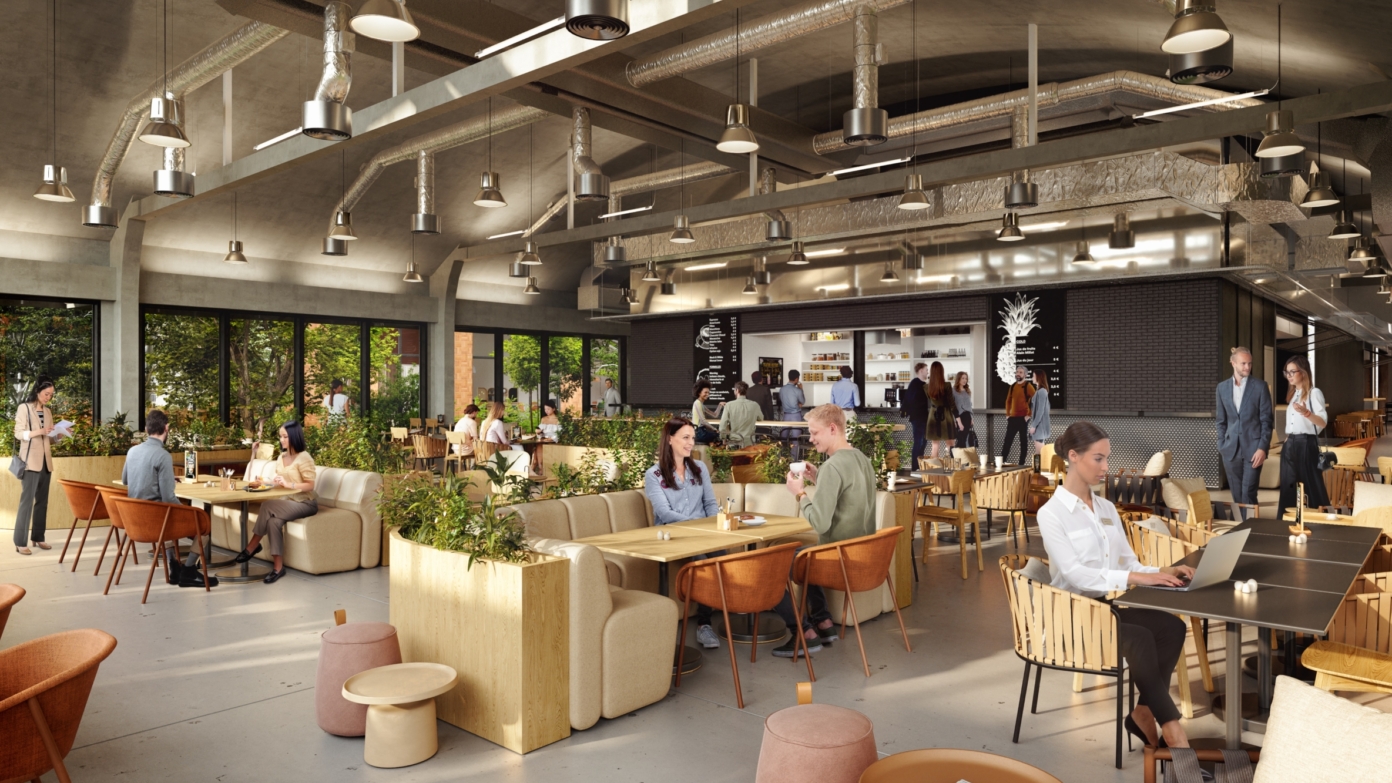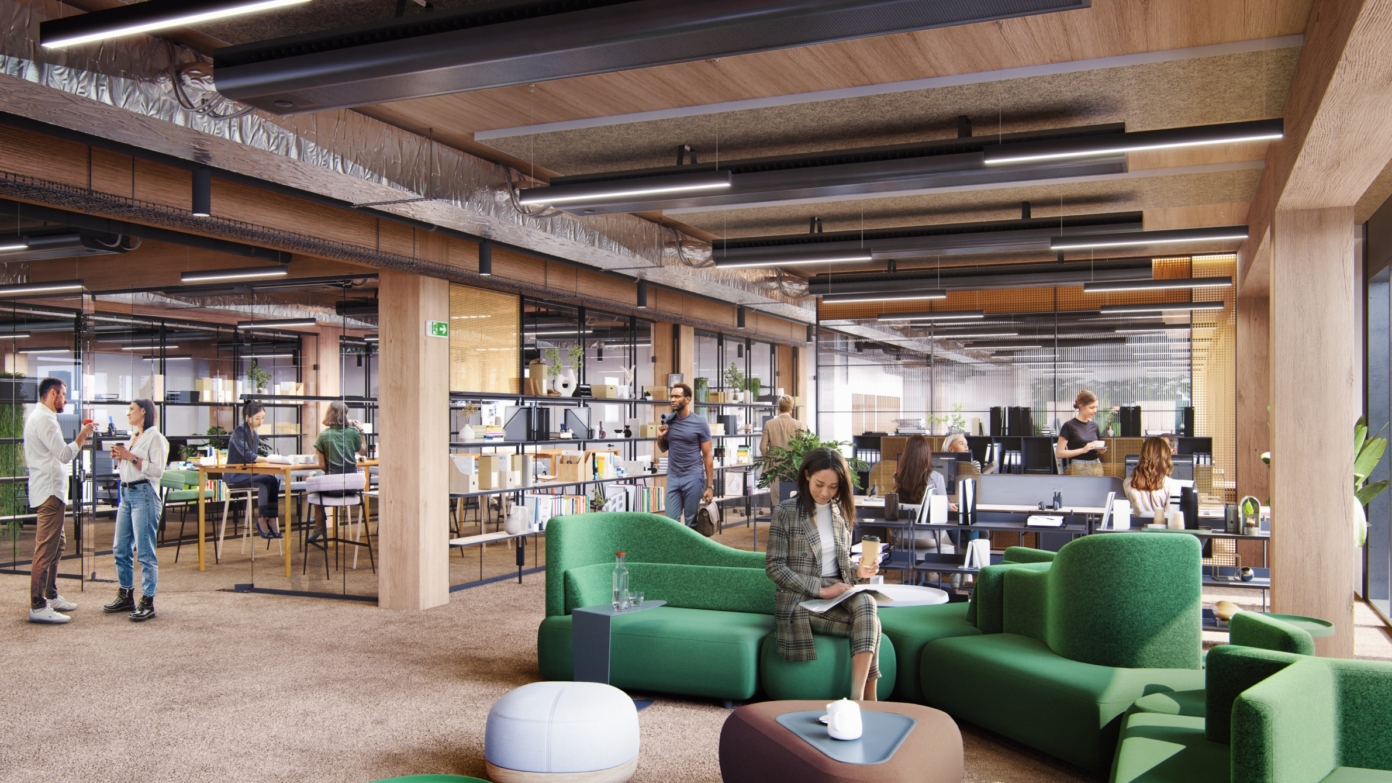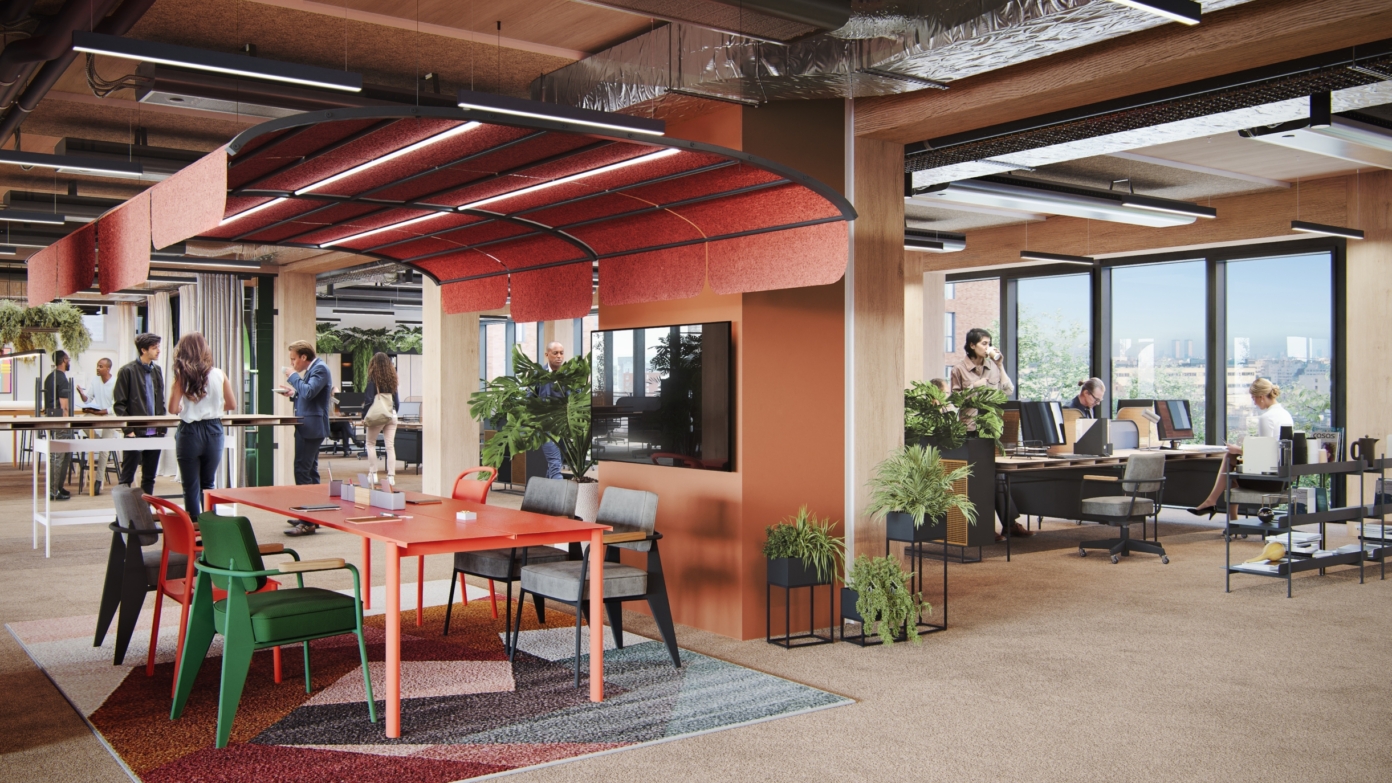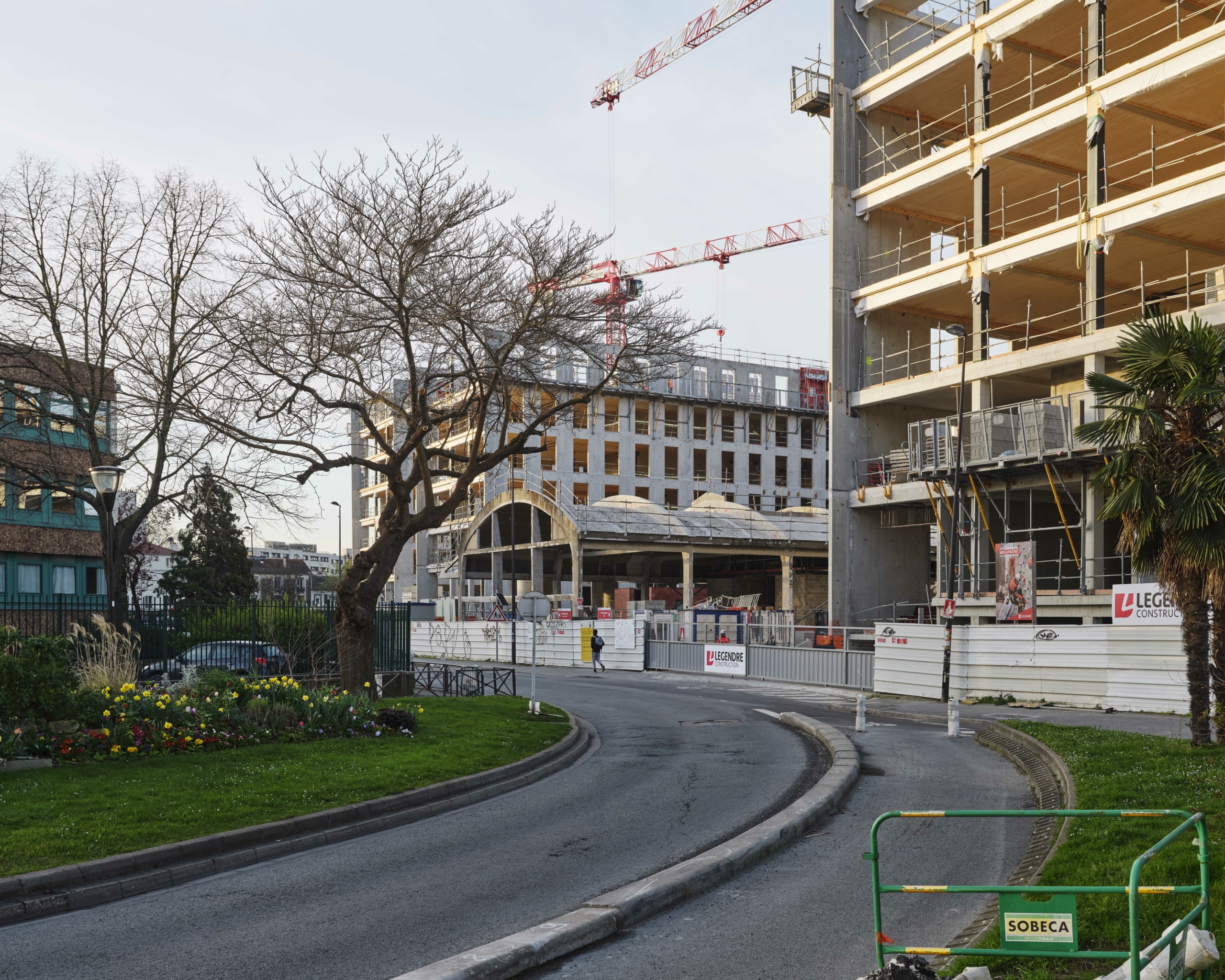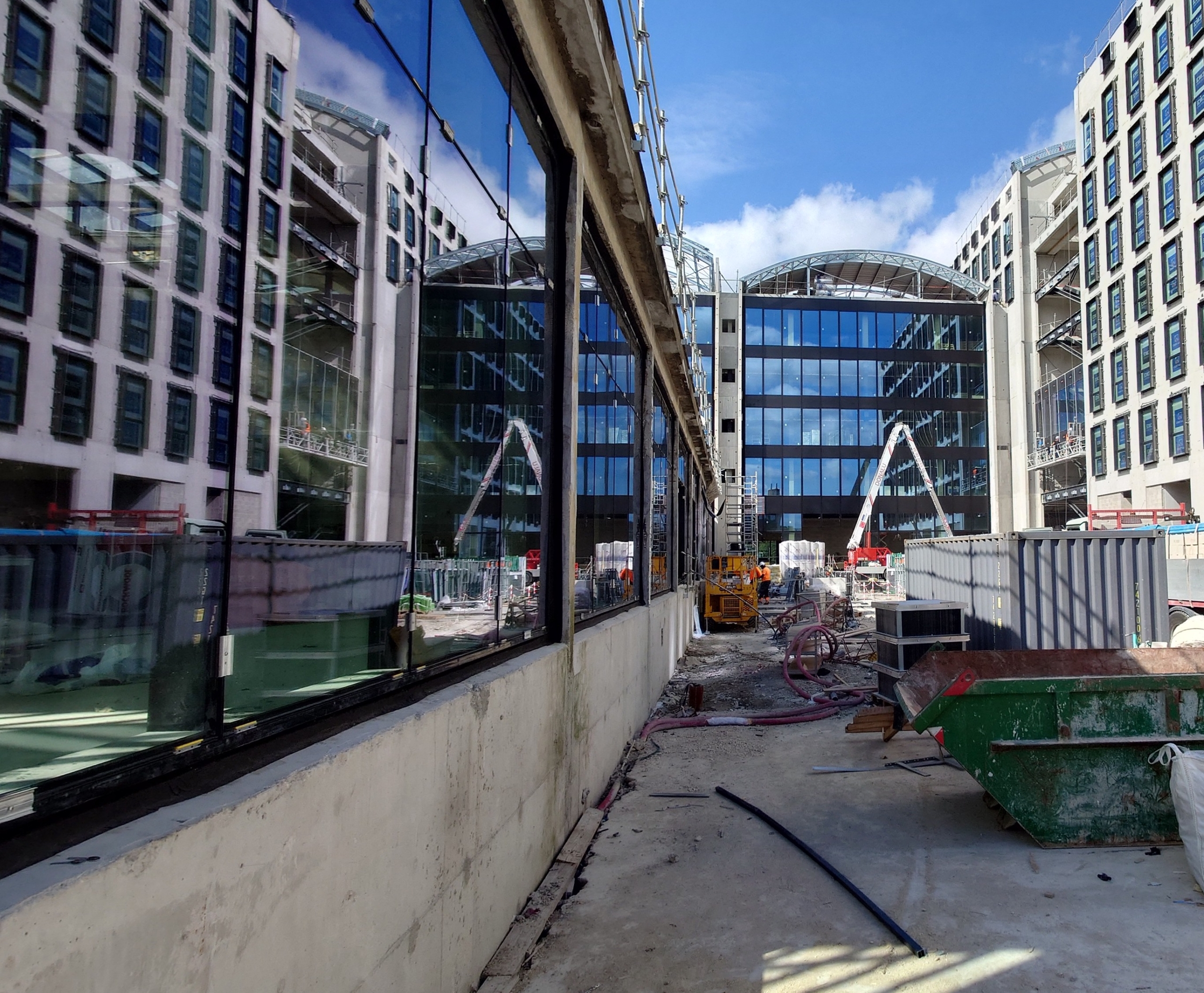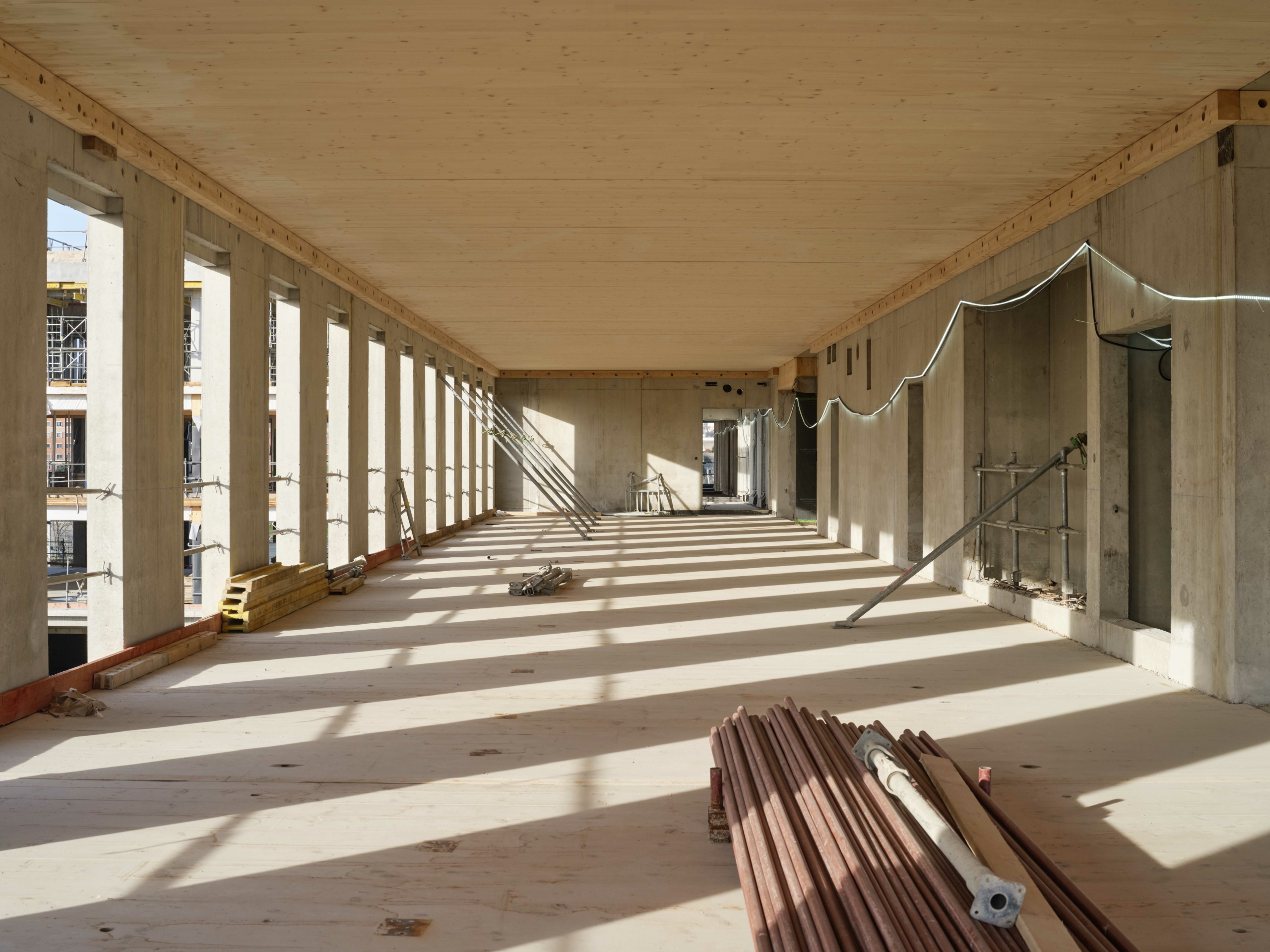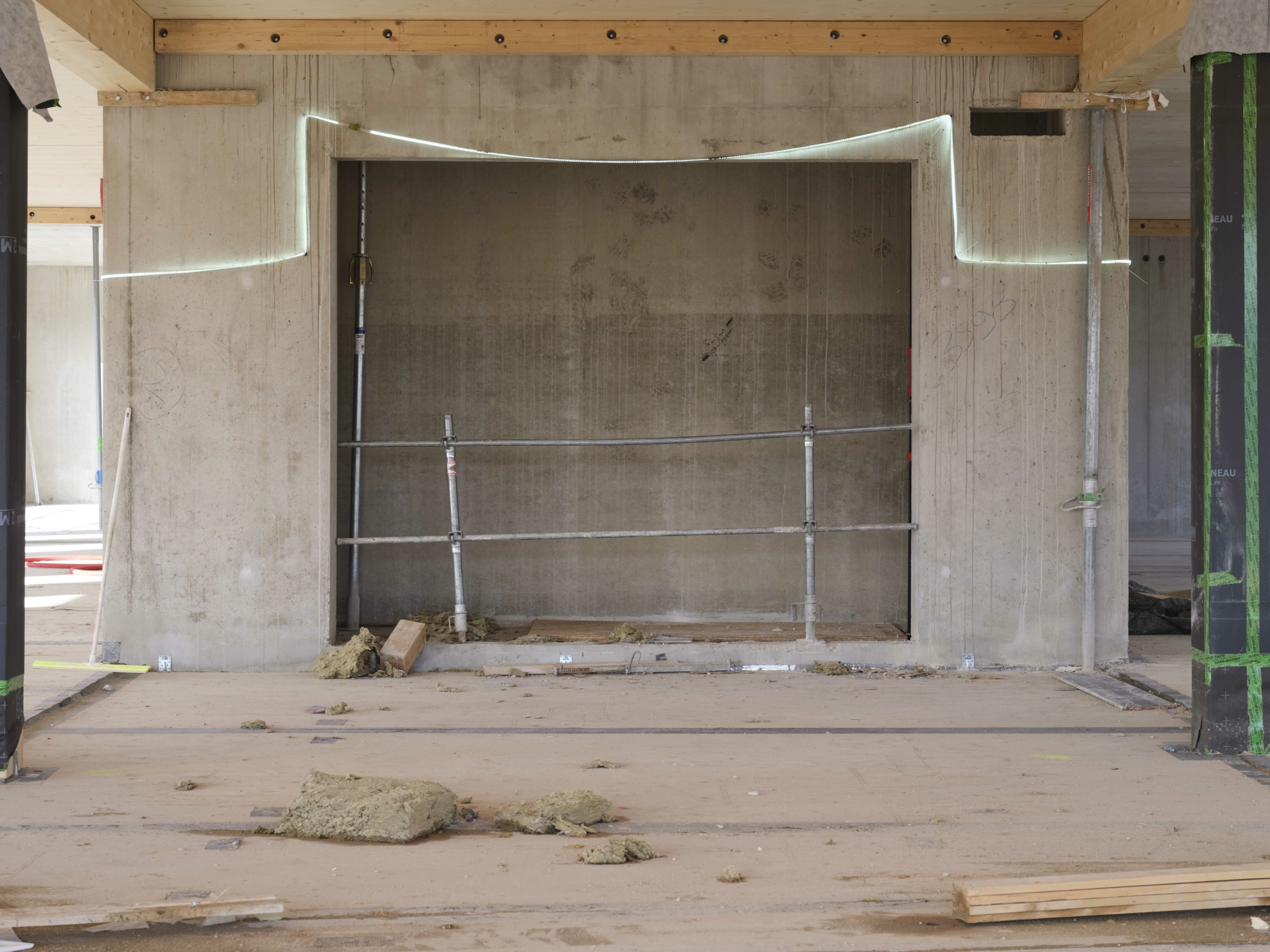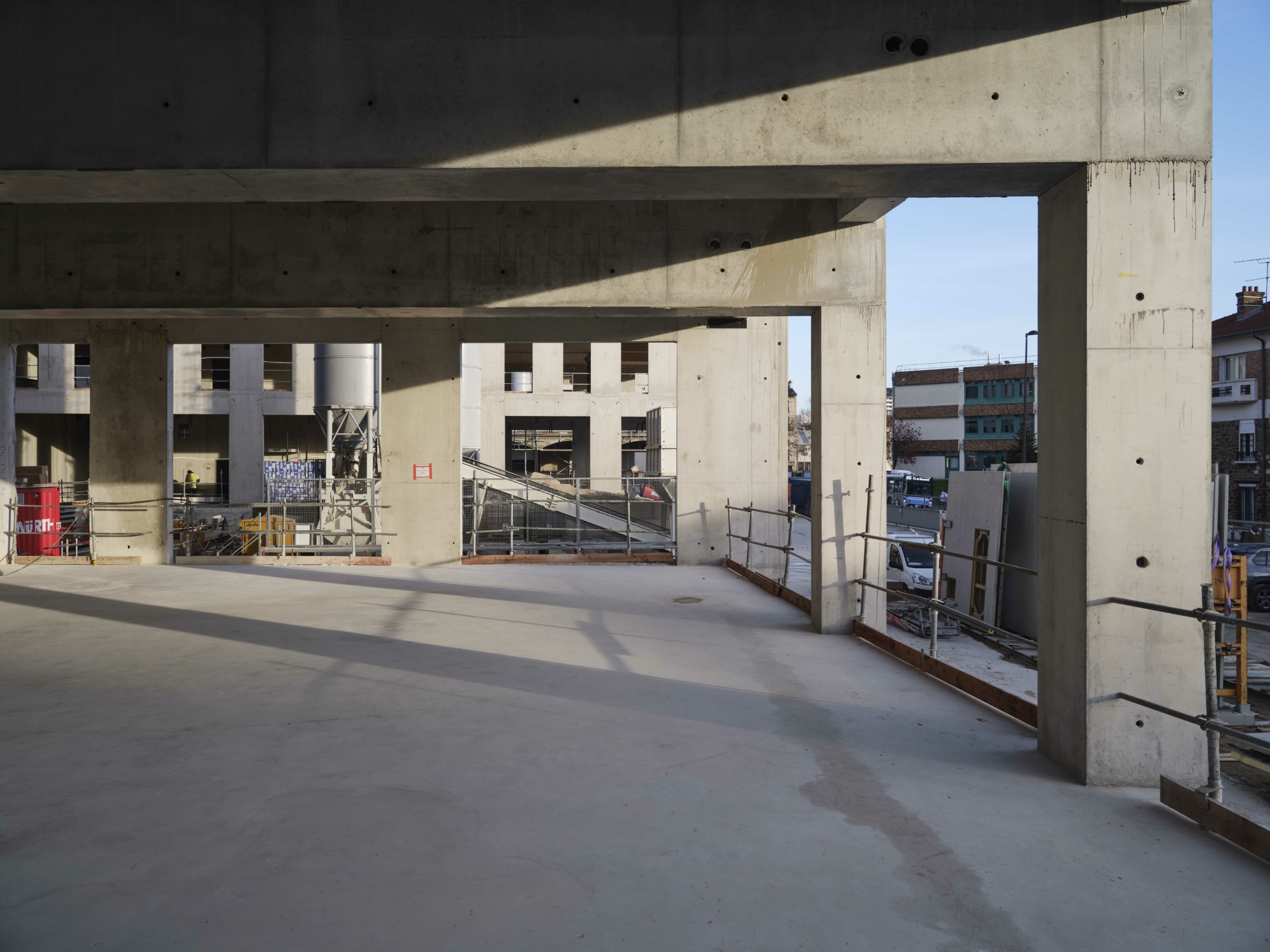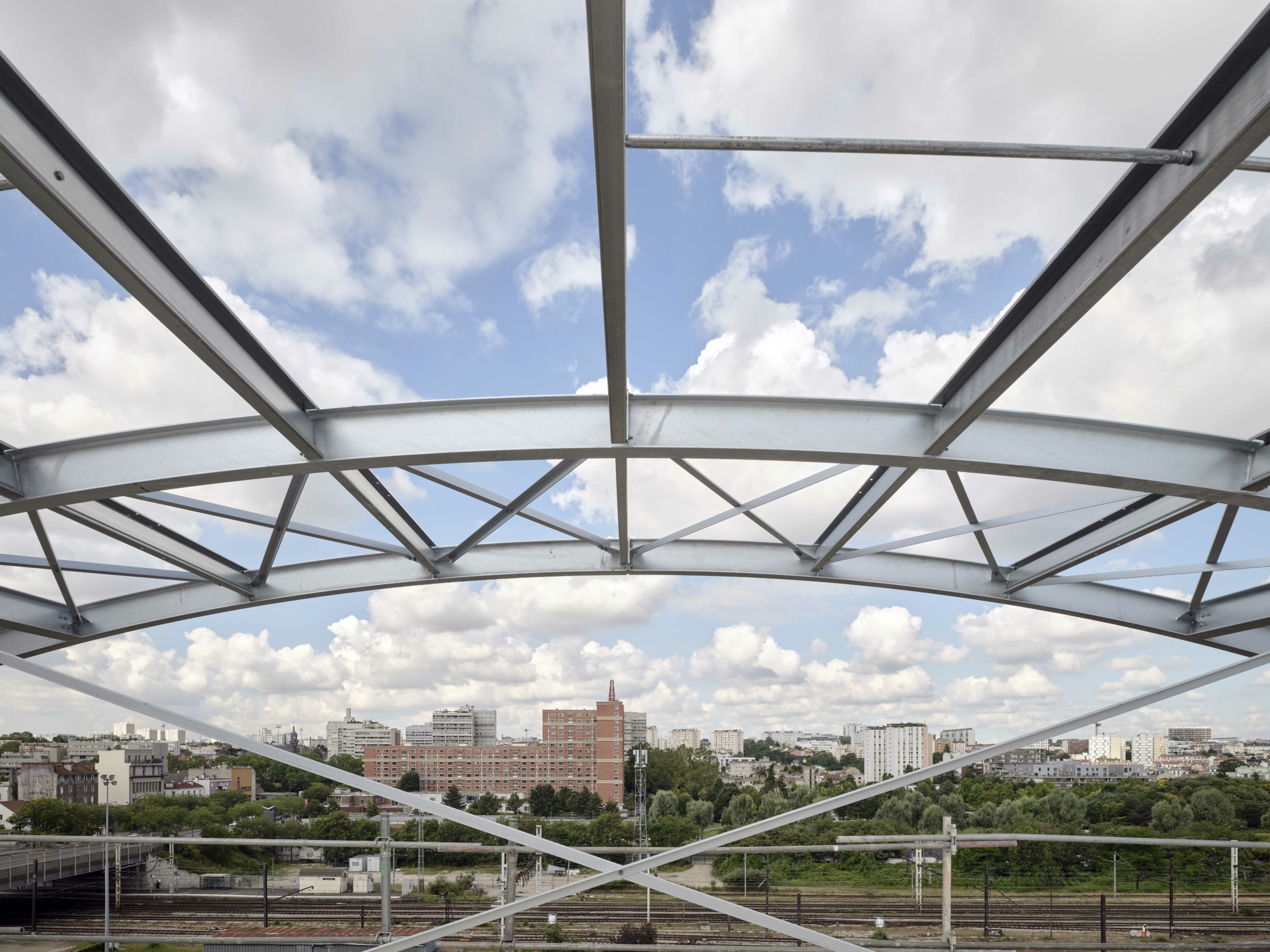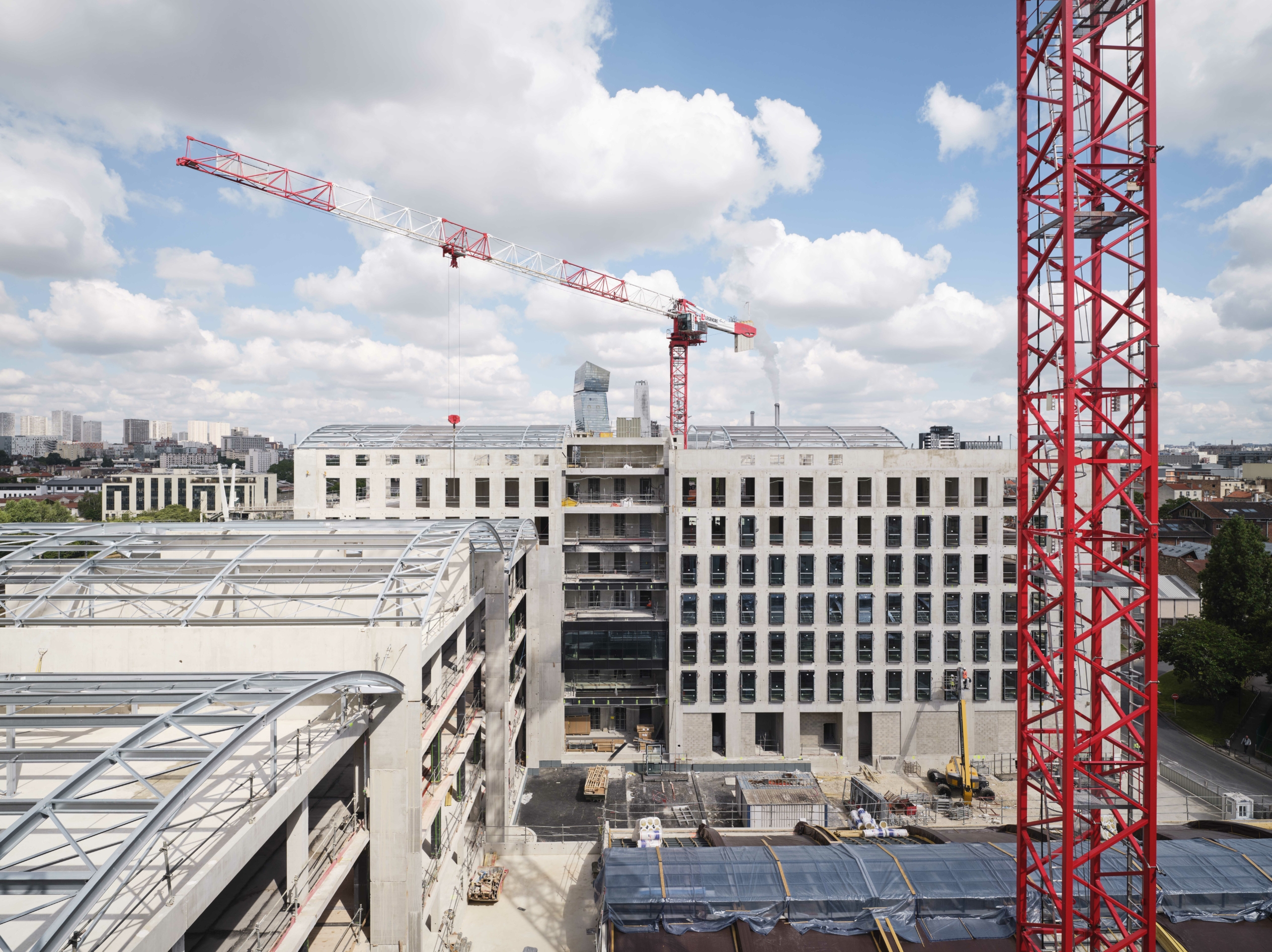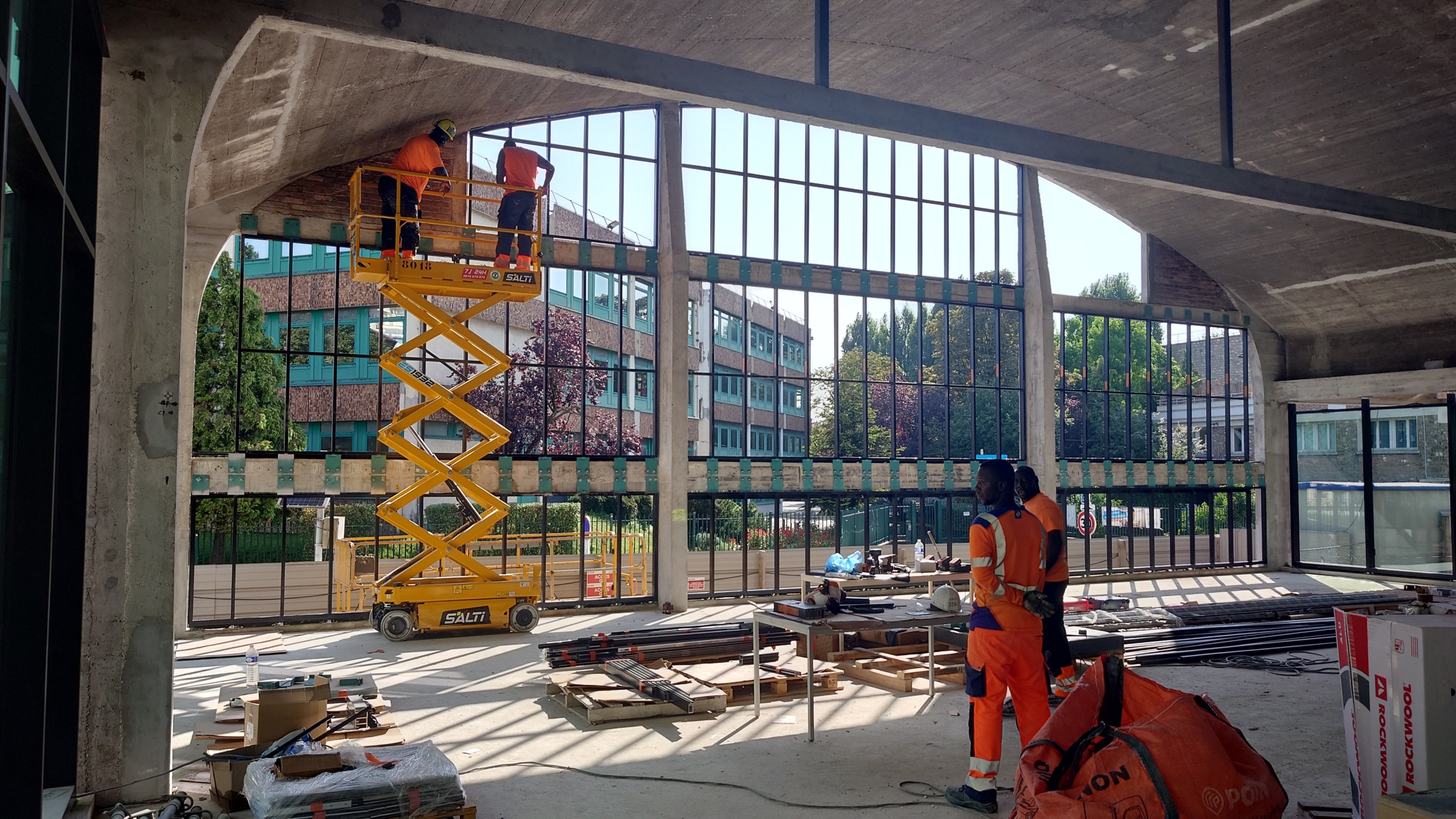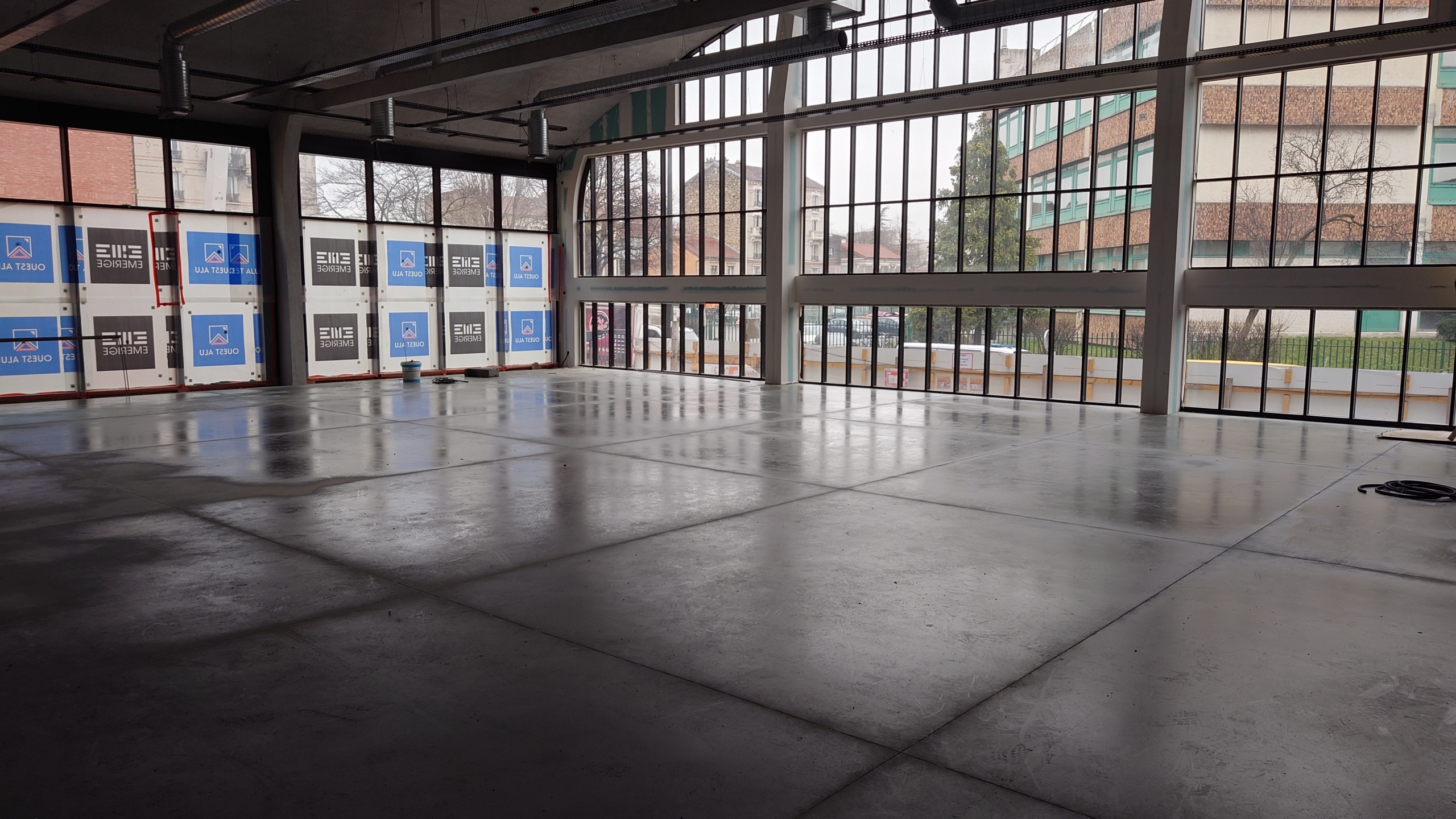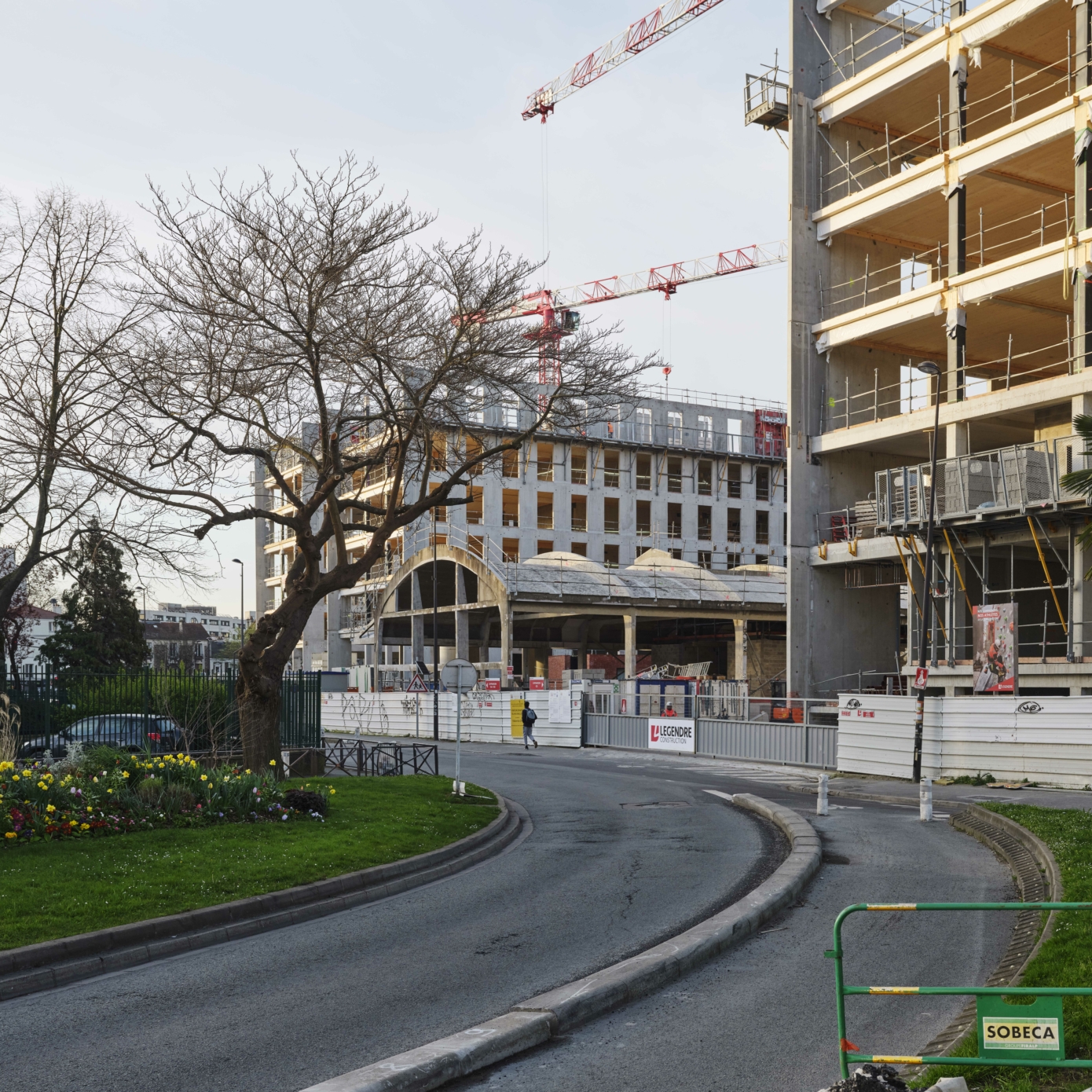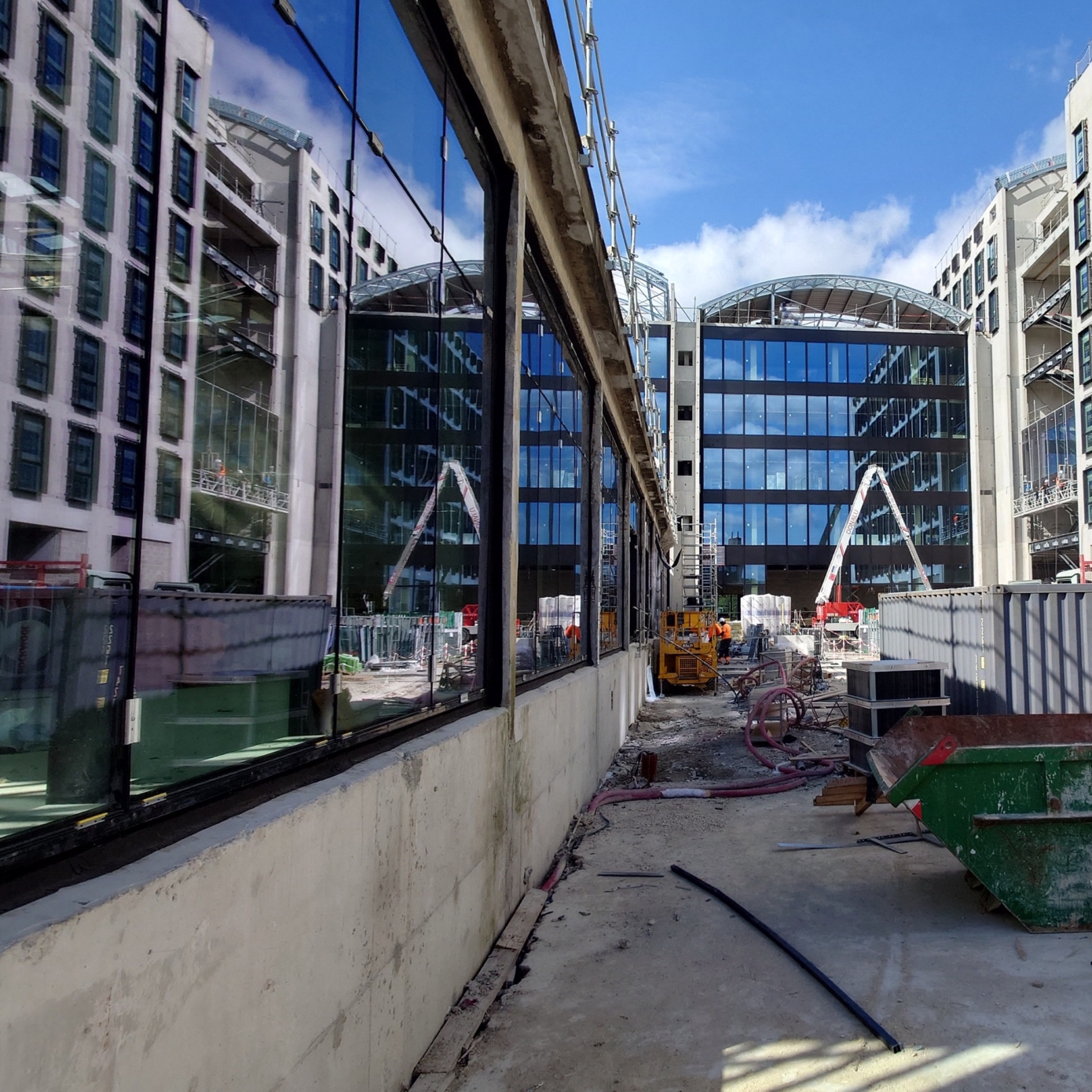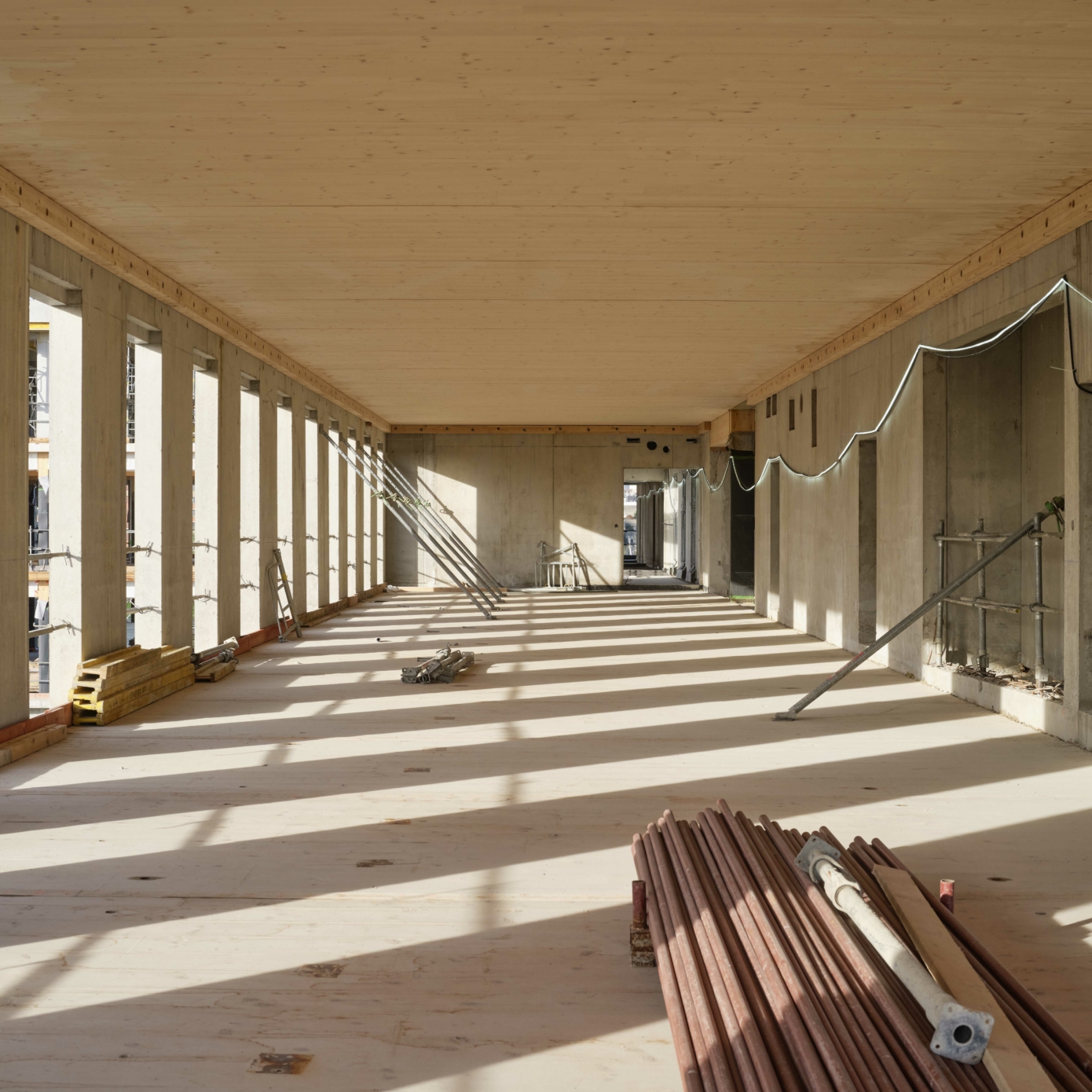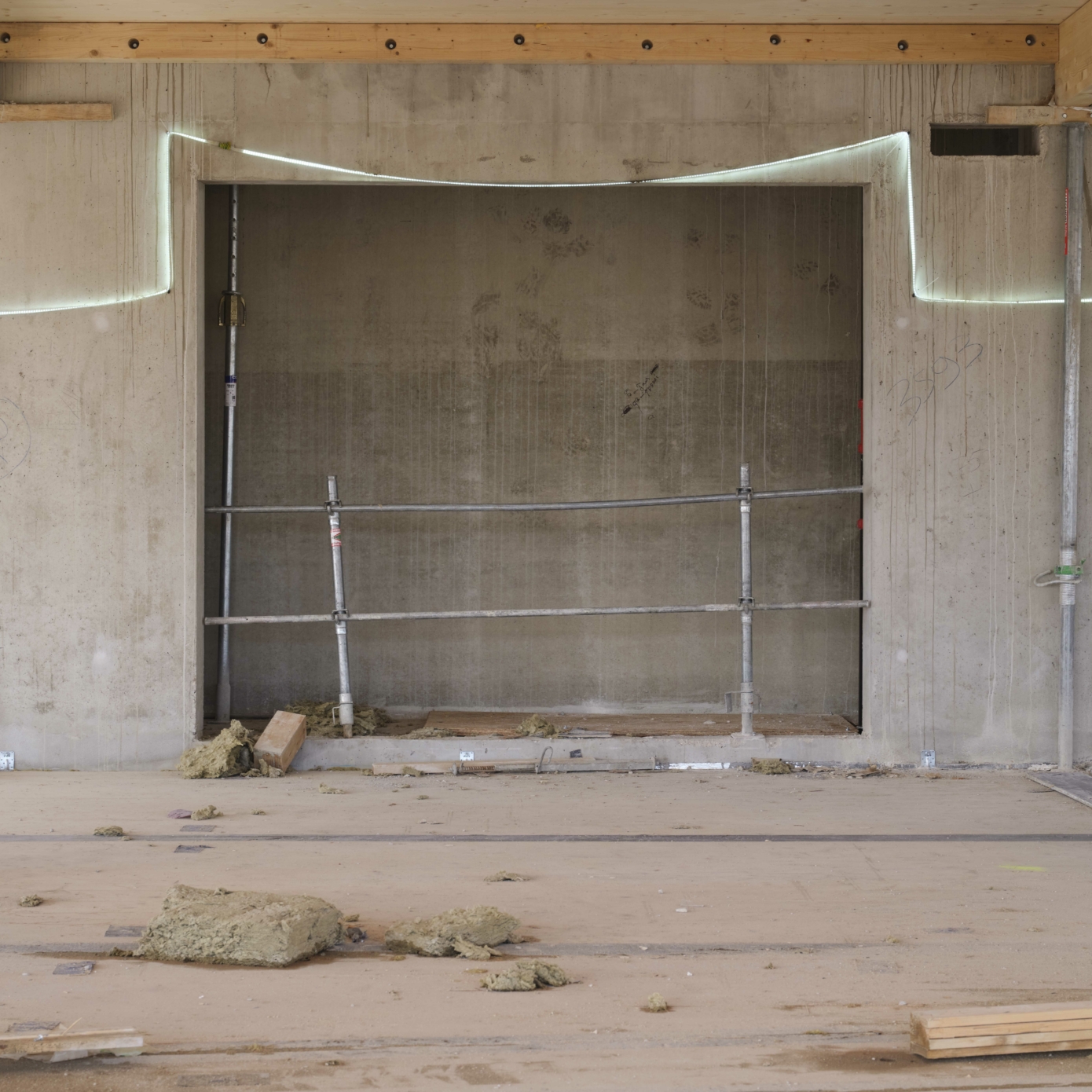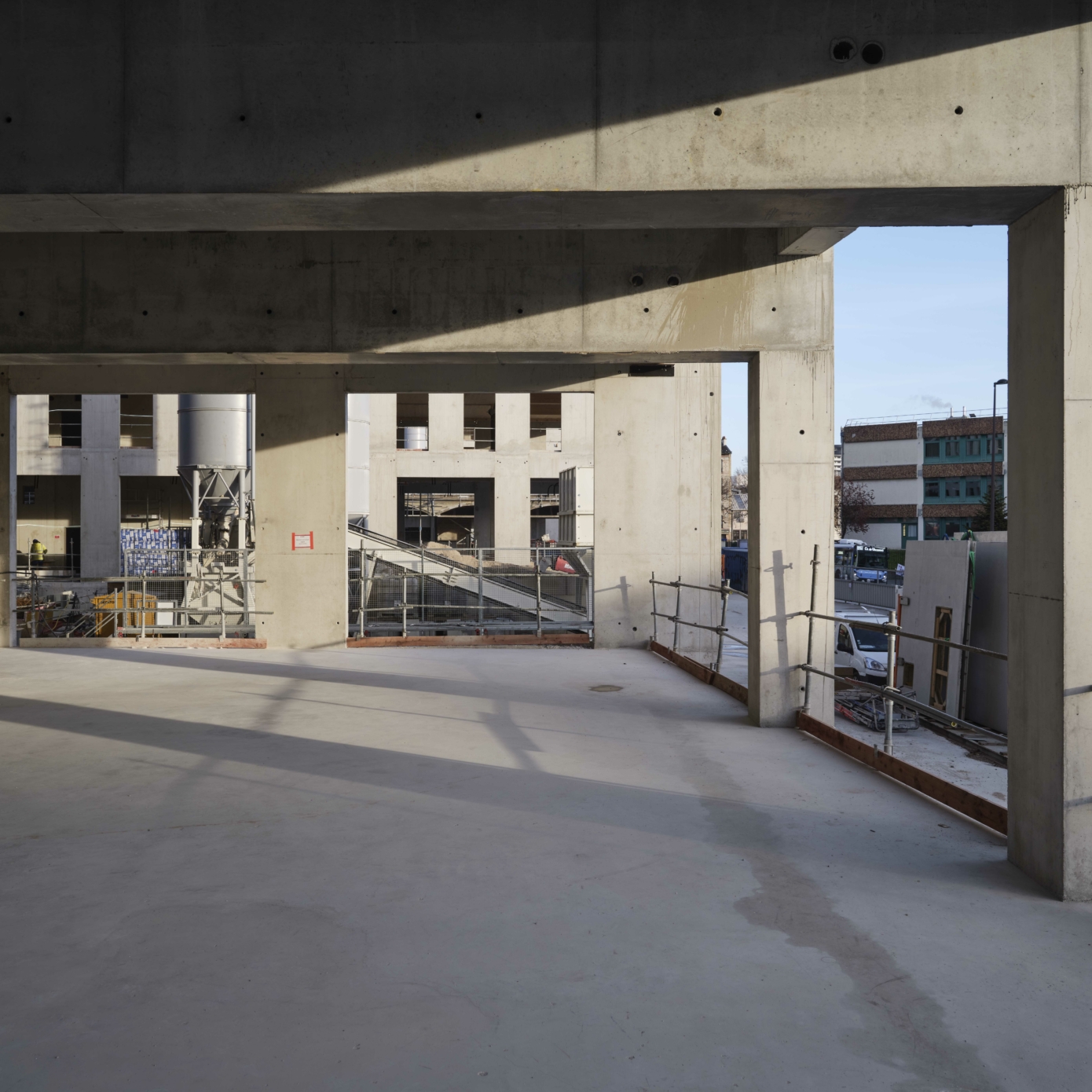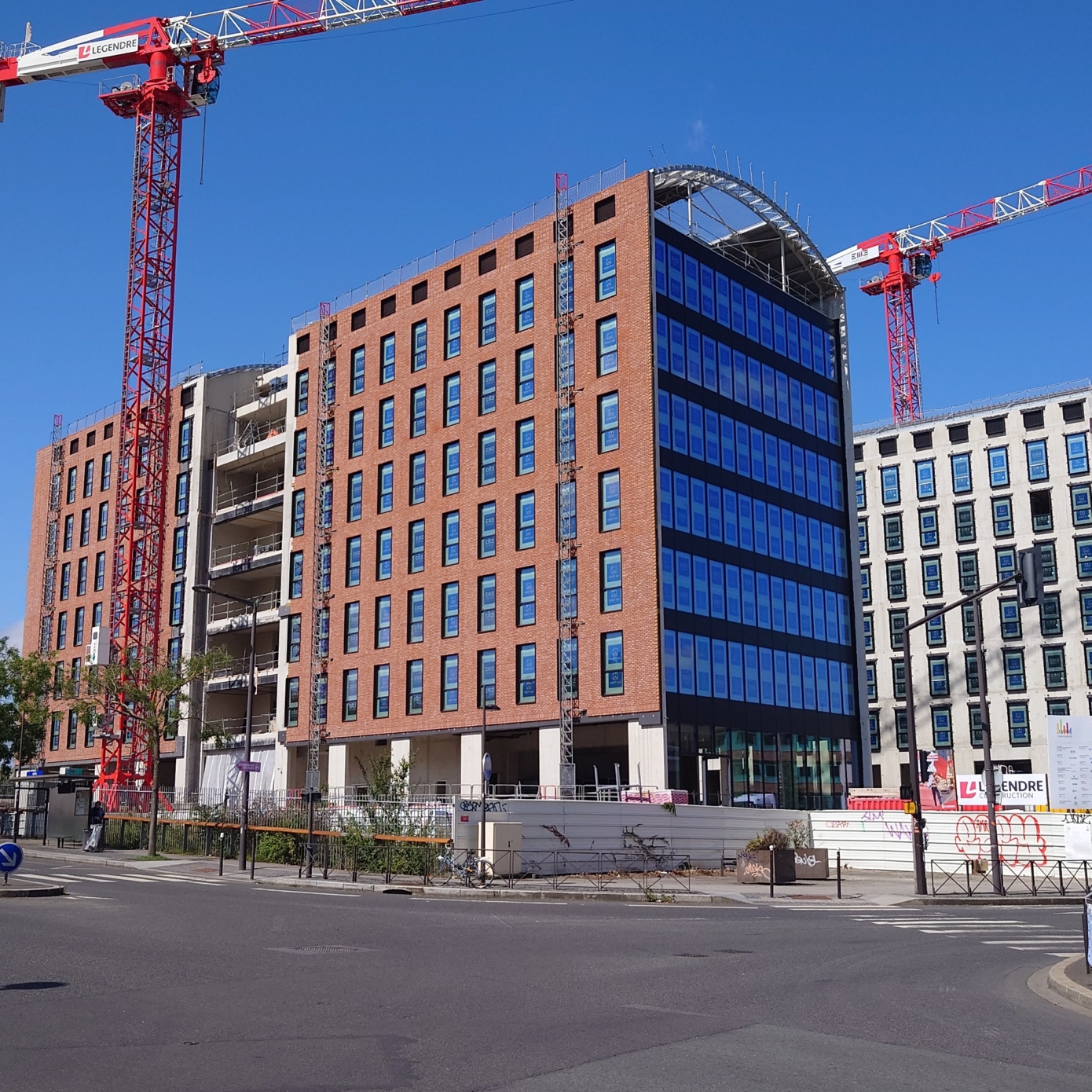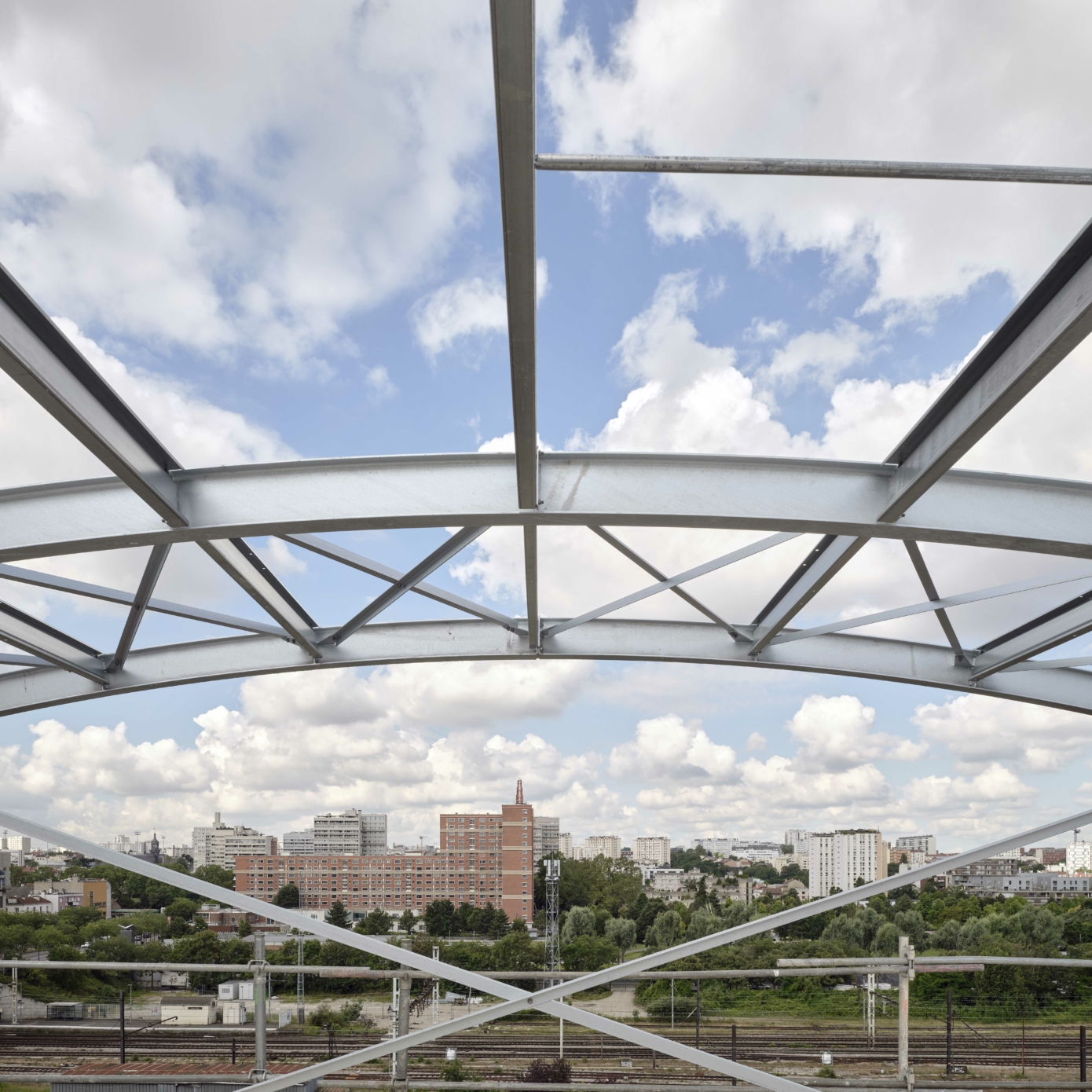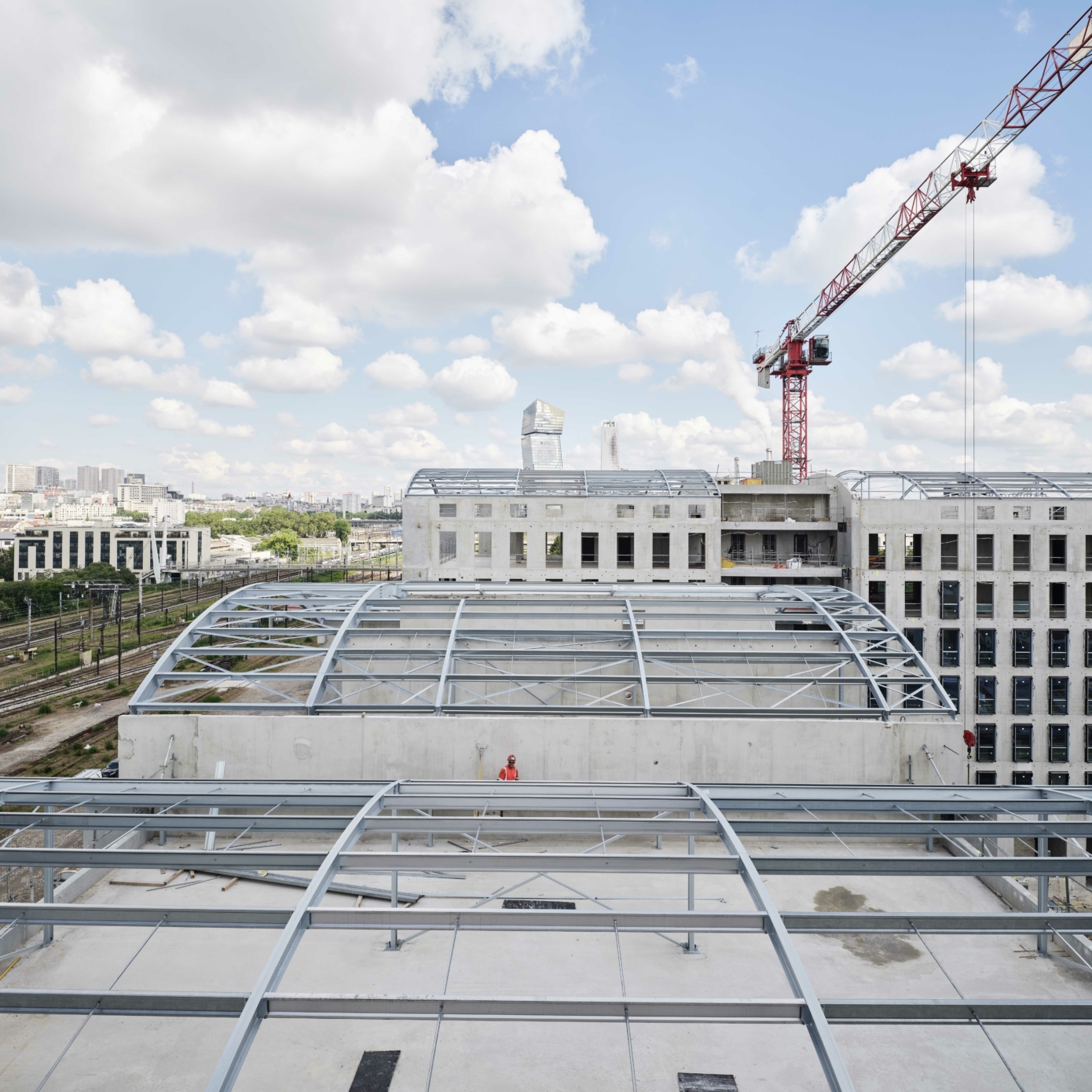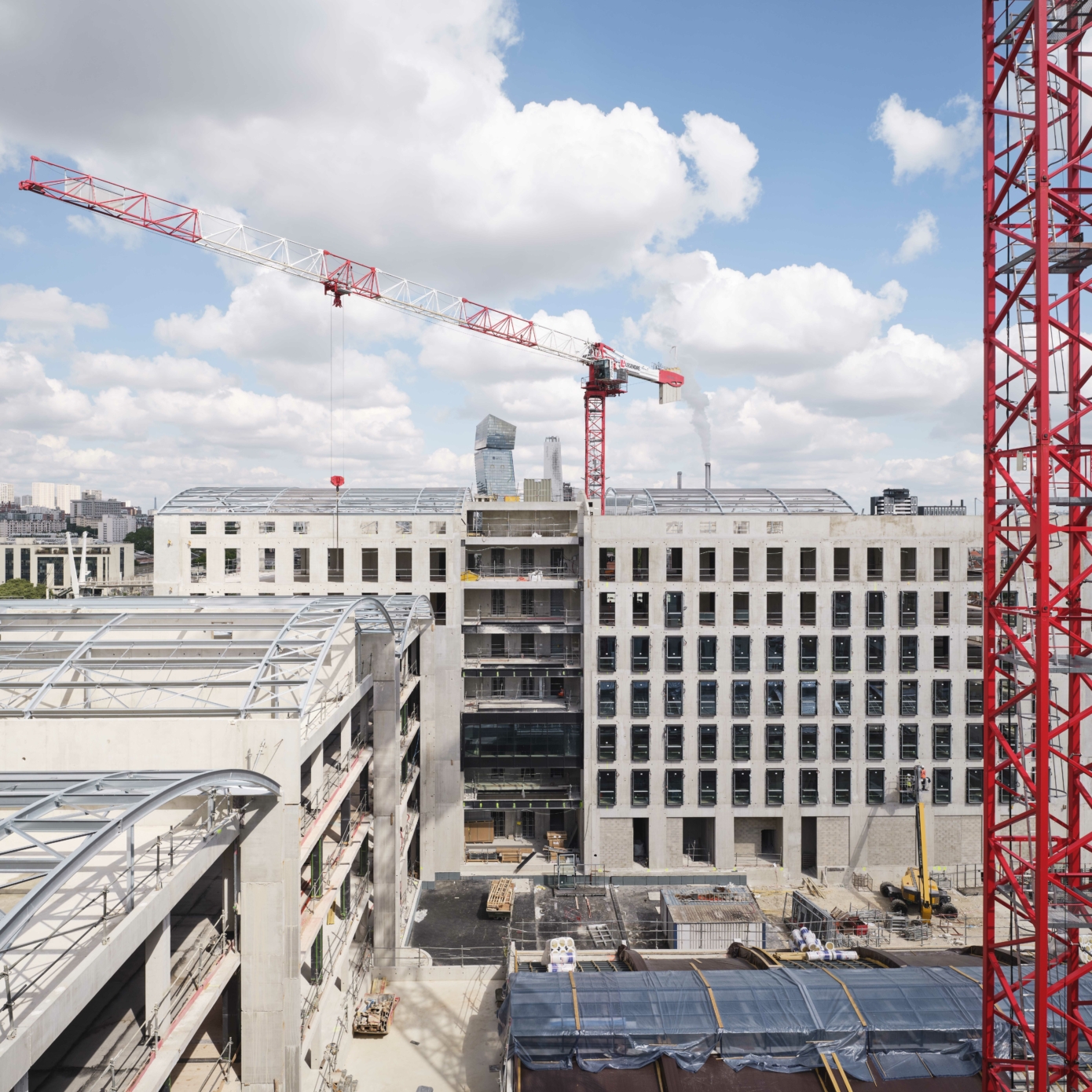360 is part of the dynamic revitalization of the Plateau district and the future prospect of a pacification of the ring road. The project rehabilitates three office buildings from the 1980s that no longer meet current needs and expectations. Its remarkable location and accessibility, at the head of the ring road, at the border of Vanves and Paris, invited an ambitious rehabilitation to develop comfortable, efficient and innovative spaces, while adapting the building to contemporary environmental issues.

Ivry-sur-Seine: An urban context brimming with transformation
A unique industrial heritage
The Ivry Confluences project takes after the rich history of Ivry-sur-Seine, engaging both with its past and its future dynamics. Formerly famed for its countryside retreats, the town has seen its face and territory intimately shaped by the Industrial Revolution. At the meeting point of the Seine and the Marne rivers, transected by broad swathes of railway tracks leading to the Gare d’Austerlitz railway station, Ivry presented a strategic location for these new industries. The shift of the French economy to services has nevertheless resulted in a decline of the manufacturing industry, resulting in the proliferation of brownfield sites. Though deindustrialization has gone hand in hand with the impoverishment of working-class populations, it has also provided Ivry with tremendous industrial heritage and acreage that can be reclaimed, presenting a unique opportunity to breathe new life into the area.
A district undergoing revival
The Confluences District is benefiting from the revitalization initiatives broadly targeted at the entire south end of Ivry-sur-Seine and aiming to make the most of its prime location. The vast industrial holdings in direct contact with the Seine banks are now freed up, and the area is very well served by public transport (the RER C suburban line lies at a 3 minutes walking distance from Ivry Confluences, and Metro Line 7 is 11 minutes away, with the future extension of Metro Line 10 and the creation of the T Zen 5 bus line further connecting the area to the surrounding city). The municipality aspires to bolster its mixed-use urban fabric (housing and activities) and improve its connection with the historical center (by widening the Pont Gosnat bridge and creating a new crossing over the railway tracks), thus retaking the Seine to the benefit of all of Ivry’s inhabitants. Boasting exceptional forward visibility with its location on the landing of Pont Gosnat bridge, close to the RER suburban railway station (with five million passengers per year), Ivry Confluences will form one of the first emblematic symbols of the renewal of the district.
A remarkable surrounding environment
On the local scale, Ivry Confluences opens onto a highly characteristic railway landscape formed by broad swathes of railway tracks leading to the Gare d’Austerlitz railway station. An invitation to travel and a legacy of a smokestack past, the opening formed by the railway lines considerably improves the visibility of the complex, while conversely offering outstanding vistas on the city of Ivry, and in particular on the iconic Cité Maurice Thorez, with its impressive architecture of concrete and brick that is now recognized by the French “20th-century heritage” heritage list, as well as the gorgeous Parc de Cormailles, the main garden and green lung of the city.
An inspiring industrial heritage
Ivry Confluences also capitalizes on the presence within its boundaries of the Halles Haber, a unique piece of industrial heritage. The project strives to make the most of these vast industrial halls, which attest to the efficiency and the rationality of construction in the railway sector, with their concrete arches spanning an impressive 18 meters. Though the pursuit of both density and maximizing open ground areas doesn’t allow keeping all the halls, the project nevertheless draws from the singular geometry of their convex roofs, as well as their original layout. In keeping with the preexisting construction design, Ivry Confluences thus retains the principle of a comb-shaped layout, perpendicular to Rue Molière and to the railway tracks, positioning volumes having the same width (18 meters) side by side, but with varied lengths and heights. High and low volumes therefore coexist, preserving the particular morphology of the district.
Ivry Confluences: An iconic, practical, and efficient complex
An iconic morphology
The comb-shaped layout, associated with the extrapolated roofs of the historical profile of the halls, thus proposes a dialogue with the retained hall, while also offering a singular and shifting form along the railway tracks. It consists of four buildings laying out a succession of courtyards, thus placing the conserved hall at a distance, thereby giving it visibility and a singular place in the overall complex. To the east, two wings are also set back from the street line of Rue Molière, thus providing views on the historic hall from the Gosnat–Molière junction.
Facing the imposing Cité Maurice-Thorez, Ivry Confluences also proposes an architectural dialogue with this unique structure, recently indexed on the French “20th-century heritage” list. The choice of brick on the façade is thus both tribute and connivance, while also reflecting the desire to adopt a timeless and understated expression through the use of the environmentally responsible material, which also carries the added benefit of requiring little maintenance. Variations in the hues of the bricks are used to dissociate the various addresses within the complex.
A complex grounded in dialogue with its urban context
On the side overlooking the railway tracks, on the southwest façade, the project offers a succession of gables aligned on the property line. They recompose the preexisting urban façade, while enriching it with a composition with varied heights that lends a more dynamic touch to the silhouette and limits impressions of architectural mass. In addition, running across these glazed gables are planted terraces and long balconies that offer passive solar protection, as well as outdoor spaces for the offices, turning them into spots to contemplate the panorama.
On the Rue Molière side, the composition offers a scenery of a succession of three green courtyards guiding users towards the entrances of the buildings. These courtyards dampen the perception of the density of the plot and are used for a variety of shared uses, with al fresco dining and urban workout furniture available. The succession of solids and voids lends a more dynamic touch to the silhouette of the complex as seen from the street, making it appear more like a succession of buildings of a restrained scale than as an imposing office complex.
A flexible inner layout, fostering well-being and innovative uses
Far removed from gratuitous formalism, the architectural approach developed by PCA-STREAM for Ivry Confluences is guided by a reflection on uses, and in particular that of changing working practices, with a view to fostering innovation and quality of life in office environments. The general approach consists in improving legibility, rationalizing the use of space, optimizing circulations, fostering horizontality and comfort, and providing more hybrid spaces for conviviality.
A 128 meters long inner street runs through the building’s base, while the comb-shaped layout with three courtyards helps arrange inflows into the buildings as well as their versatility. The cores arranged centrally within each of the buildings are used for the key interior circulation flows. They were designed to offer maximum comfort of use and feature open stair landings on the façades, basked in natural light. The floor and stair landings are then no longer mere transit points, but are also potential meeting points. The vertical circulations foster pedestrian traffic within the buildings, which increases opportunities for informal encounters.
On the upper floors, large, pleasant and well-lit open floor plates are conducive to employee well-being. These are extremely modular, and can accommodate up to six start-ups on each level, and offer outdoor access on all floors via planted walkways on the side that overlook the railway tracks. The panoramic rooftop and terraces on each top floor also offer outstanding vistas.
An ambitious environmental strategy
In order to meet the ecological ambitions of the district, Ivry Confluences develops an environmental strategy based on a large number of features which holistically come together to bolster the exemplary character of the complex. In addition to enabling dialogue with the city’s architectural heritage, the decision regarding the materiality of the façades, with the use of fired clay bricks, asserts the choice of a timeless and low-embodied-carbon material. Each of the buildings also rests on infrastructure made of low-carbon concrete (made necessary due to flood protection constraints), on top of which a structure made entirely out of wood is erected, including posts, beams, and floors. Adapted reuse is applied throughout construction, along with a large-scale use of bio-based materials—a reclaimed raised floor, blackout blinds made of recycled textiles, seaweed paint, etc.
In their very morphology, the buildings rely on simple and passive thermal performance systems—the largely glazed gable façades feature outdoor walkways at varying depths depending on exposure and acting as fixed brise-soleil systems. As for the lengthwise façades (on the southeast and northwest exposures), they aim at striking a balance between solid and glazed surfaces (where the glazing is set back to prevent solar heat gain without required external solar protection systems). Finally, environmentally friendly water management solutions are implemented over the entire project, in relation to the ecosystemic dimension of the landscaping project.
Ivry Confluences’ environmentally responsible design rests on a set of interconnected arrangements and doesn’t settle for good intentions or vague objectives, with each contribution being closely monitored. The complex features seven certifications—HQE Bâtiment Durable 2016 (Outstanding rating), BREEAM New Construction 2016 (Outstanding rating), Wiredscore Gold, Effinergie BBC 2017, Label E2C2, Biodivercity, and Osmoz.
The office of the future: a lively, open complex that acts as a resource for the neighborhood
A driver of the revival and diversity in the local area
Ivry Confluences was designed with a view to playing a significant role in the revival of the local area while also fulfilling the ambitious mandate that was given to Confluences by local government—being a mixed-use district hosting housing, activities, and facilities. In order to actively take part in this balancing act, Ivry Confluences ground floor is programmed so as to bring vibrancy to the street by opening to local residents, following a logic rooted in reciprocal benefits. The office building thus transforms into a new hub for urban living in the neighborhood and, in return, becomes welcoming and a place that is conducive to user comfort.
A new vibrant hub
With the contemporary transformations in working practices, offices have essentially become living environments and should therefore have the capacity to open onto the city. Particular care was thus paid to organizing and programming the 1B building’s ground floor, which forms the primary meeting point between the building’s interior life and that of the surrounding neighborhood. A substantial part of the building services were thus installed in direct contact with the public space, with the avowed objective of contributing to its vibrancy. The ground floor provides a business center, auditorium, and a coworking space, the latter being also open to the public. Concierge services, fitness clubs, a contemporary café and a bike club are available to employees.
The Halle Haber thus houses an assortment of food stands with a varied offering that is open to the neighborhood. These catering services, which benefit from the superb volume of the hall, also have the added benefit of relative versatility, which makes it possible to imagine holding a variety of events there. Finally, it makes good use of its long glazed façades overlooking the adjoining courtyards and will easily colonize these gardens during the summer as if they were exterior extensions.
These facilities make up a shared living area, with many places for informal work that are conducive to encounters. Contrasting with the older generations of office buildings, these spaces become the living heart of the building, thus contributing to instilling vibrancy in the neighborhood. Contrasting with the older generations of office buildings, these spaces become the living heart of the building, thus contributing to instilling vibrancy in the neighborhood.
A green lung in the neighborhood
Ivry Confluences is located right in front of Parc des Cormailles, the city’s primary “green lung.” It recreates a green core echoing the public garden and sheltering a rich and diverse fauna and flora. Fulfilling these ambitions entails maximizing open soil surfaces, thus allowing for as much greening as possible on the plot. Being conducive to natural rainwater infiltration, these open ground areas form the best guarantee that the quality of the plant cover will persist over time. Planted surfaces amount to a rare 17% of the total floor area, which not only contributes to help sustain biodiversity in the district, but will also foster cool island effects.
The new volumes and the old hall thus fit into a contemporary landscape, generously planted, sustainable, and welcoming. The boundary with Rue Molière forms a real threshold limit in the landscape. Topographical constraints bring about a gently sloping landscape, punctuated with high terraces that can be discovered walking along the site and offer spaces for breaks or informal work. The succession of strata of diverse heights maximizes the variety of habitats that can support biodiversity, while the plant palette is adapted to the site, its soil, and climate change.
The close intertwining between architecture and plantation makes it possible to develop the greenery along several dimensions and at various heights—the southern façade is notably transformed into a green screen, while the terraces and roofs are turned into spaces for contemplation and breathing. Facing the sun, the southwest façade is sheltered by a persistent screen of plants, as the plantations on the ground floor run along the front of the buildings. On various stories, randomly distributed large planter boxes take over, giving rise to a veritable “green curtain” that is both lightweight and vibrant. These features improve comfort levels for the users of the building, while addressing their biophilia—the need for outdoor spaces and reconnection to nature, and a source of well-being. Ivry Confluences thus provides a variety of outdoor spaces on each story, including in the form of a small outdoor walkway, which enables employees to get a breath of fresh air without having to first go down to the ground floor. The greening of these walkways, when their orientation allows it, provides greater comfort levels in these spaces. The accessible rooftops are livened up with potted shrubs and offer a privileged vantage point of the city and the horizon. The non-accessible flat roofs are also planted. A fertile substrate will make it possible to plant a mix of species ranging from sedum to grasses and perennial alpine plants. These spaces, sheltered and secure, will become real havens for insects and birds.
All these features strengthen the landscape dimension of the district. The plant cover changes with the seasons and new forms of life take root. From the spring blooms come the summer foliage and their refreshing shades, followed by the hues of fall. The passing seasons are offered on show not only to future employees, but also local residents, secondary school students, and pedestrians in the vicinity.
-
Client
EMERIGE, CDC Investissement Immobilier
-
Program
R+6 new tertiary building composed of a wood structure with a first floor in concrete groundfloor for services and a basement level used as a parking. Partial rehabilitation of an existing hall to create a restaurant connected to the office building.
-
Location
68 rue Molière, 94200 Ivry-sur-Seine
-
Surface
30 212 m²
-
Status
Work in progress
-
Team
Assistance to the project owner:
— Control Office: BTP Consultants
— Health and Safety Coordination: BTP Consultants
— Fire Safety Consultant: CSD
— Safety Consultant: Cronos
— Restoration: Interface
— Sustainability: GreenAffair
— SSI: CSD
— Surveyor: Legrand
— BIM: Ingérop
— Economist: AE75
Project management:
— Architect: PCA-STREAM
— Project Management: CICAD
— Structure: Khephren
— Fluids: INEX
— Facades: CEEF
— Acoustics: AVLS
— Economist: CED
— Elevators: CCI
— Kitchen: Interface
— Landscaper: Atelier Fois
— Geotechnics: Artelia
— Hydrogeology: Burgeap
Images : Nineteen Groupe




